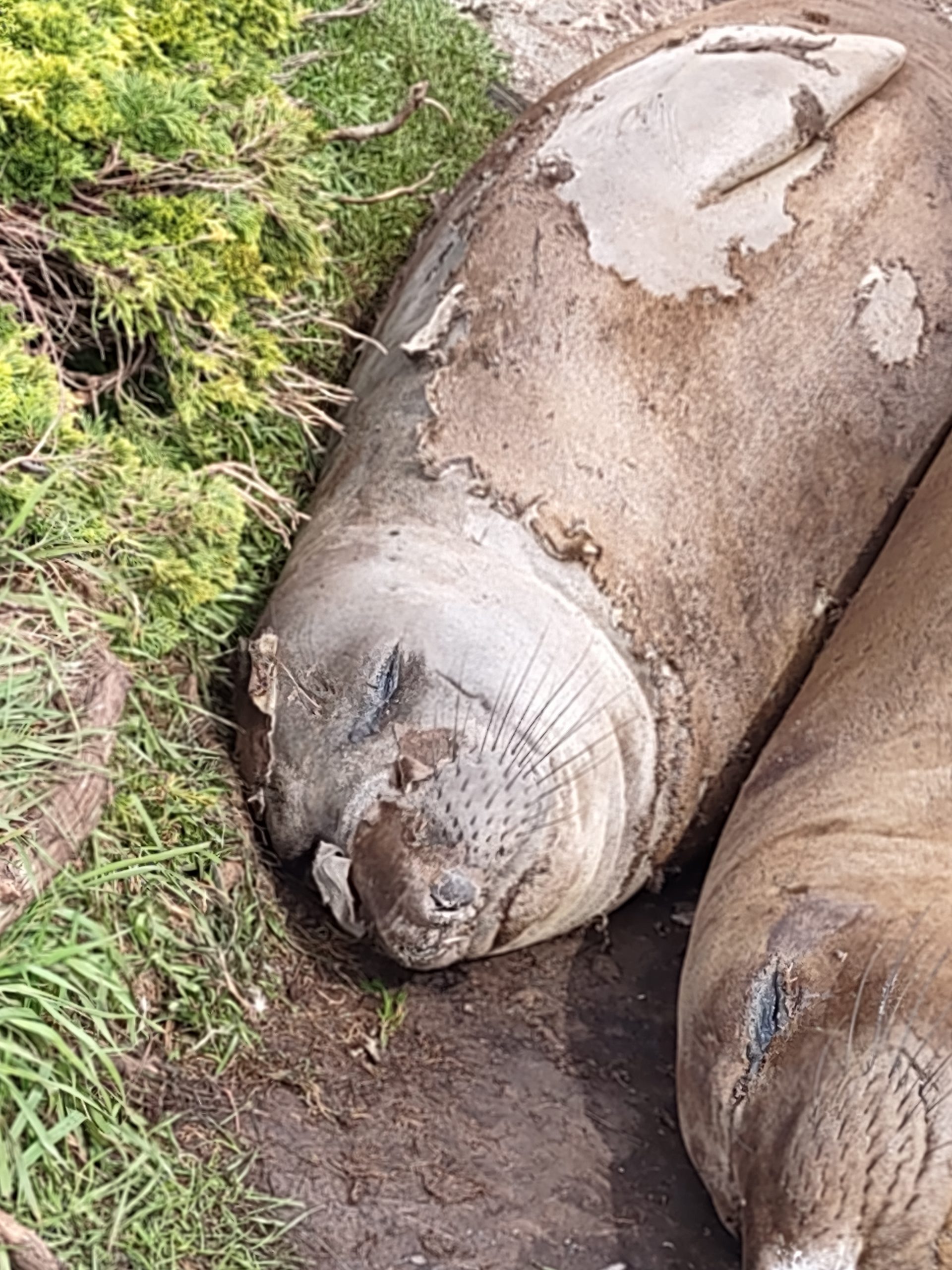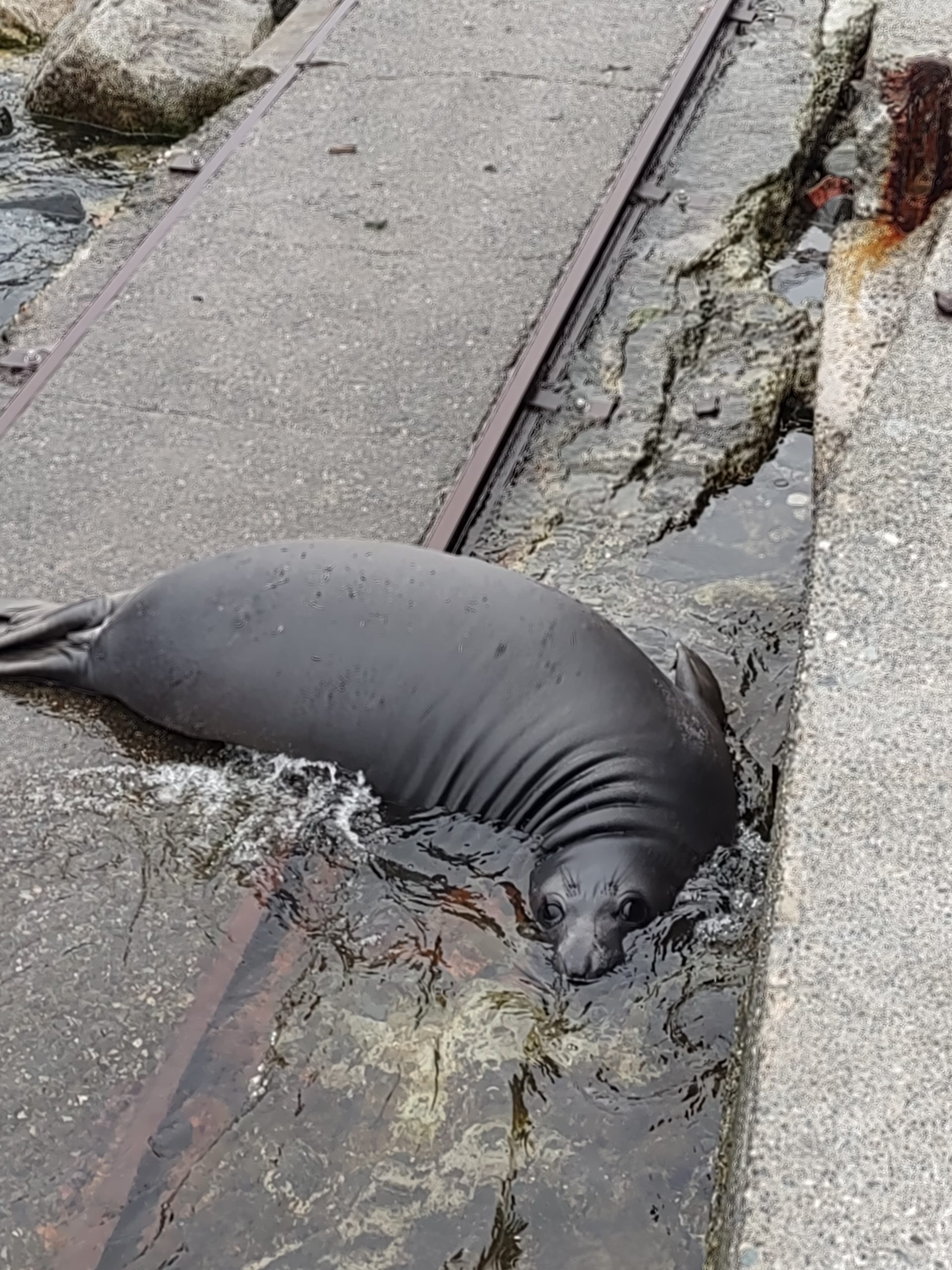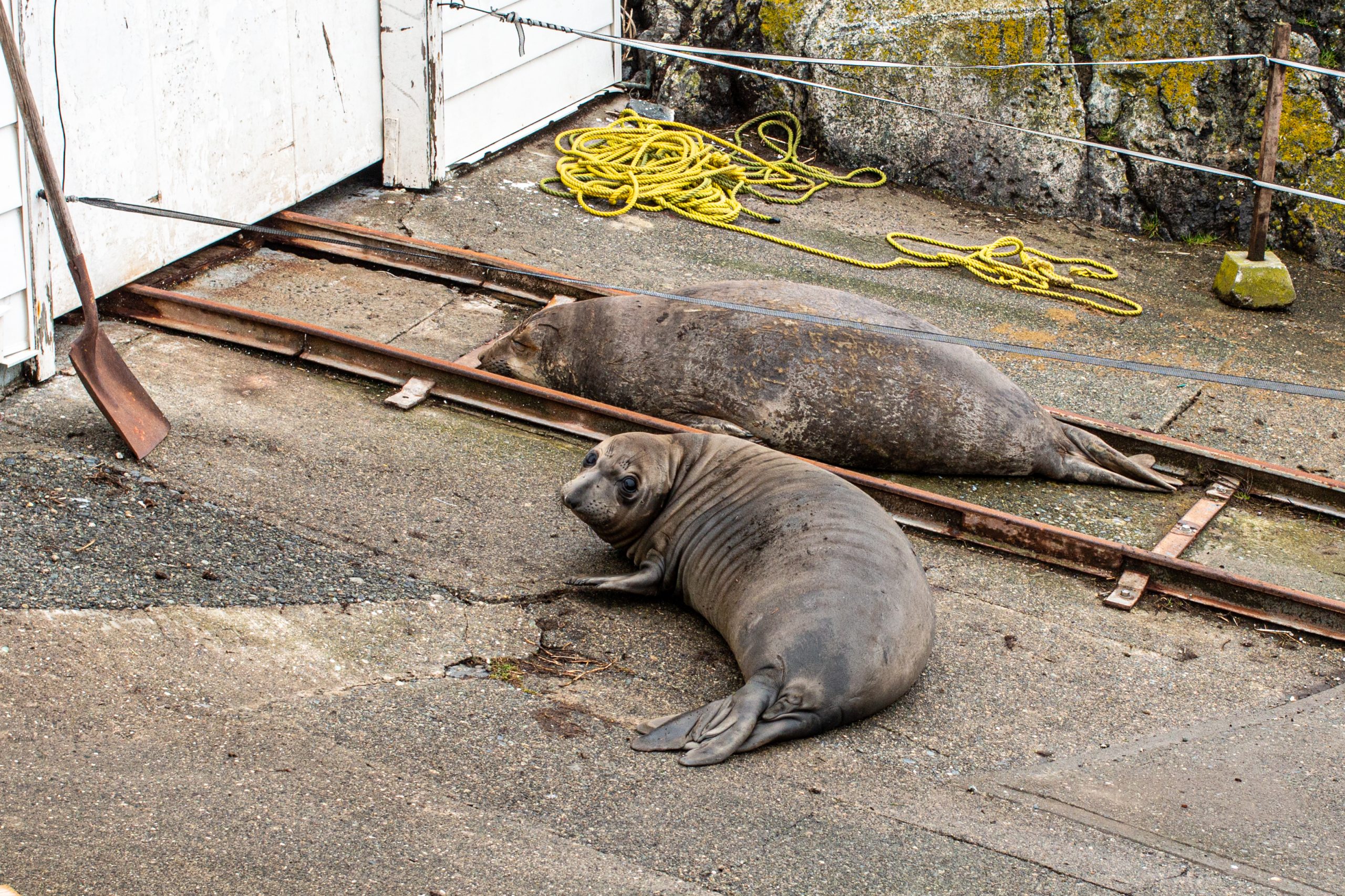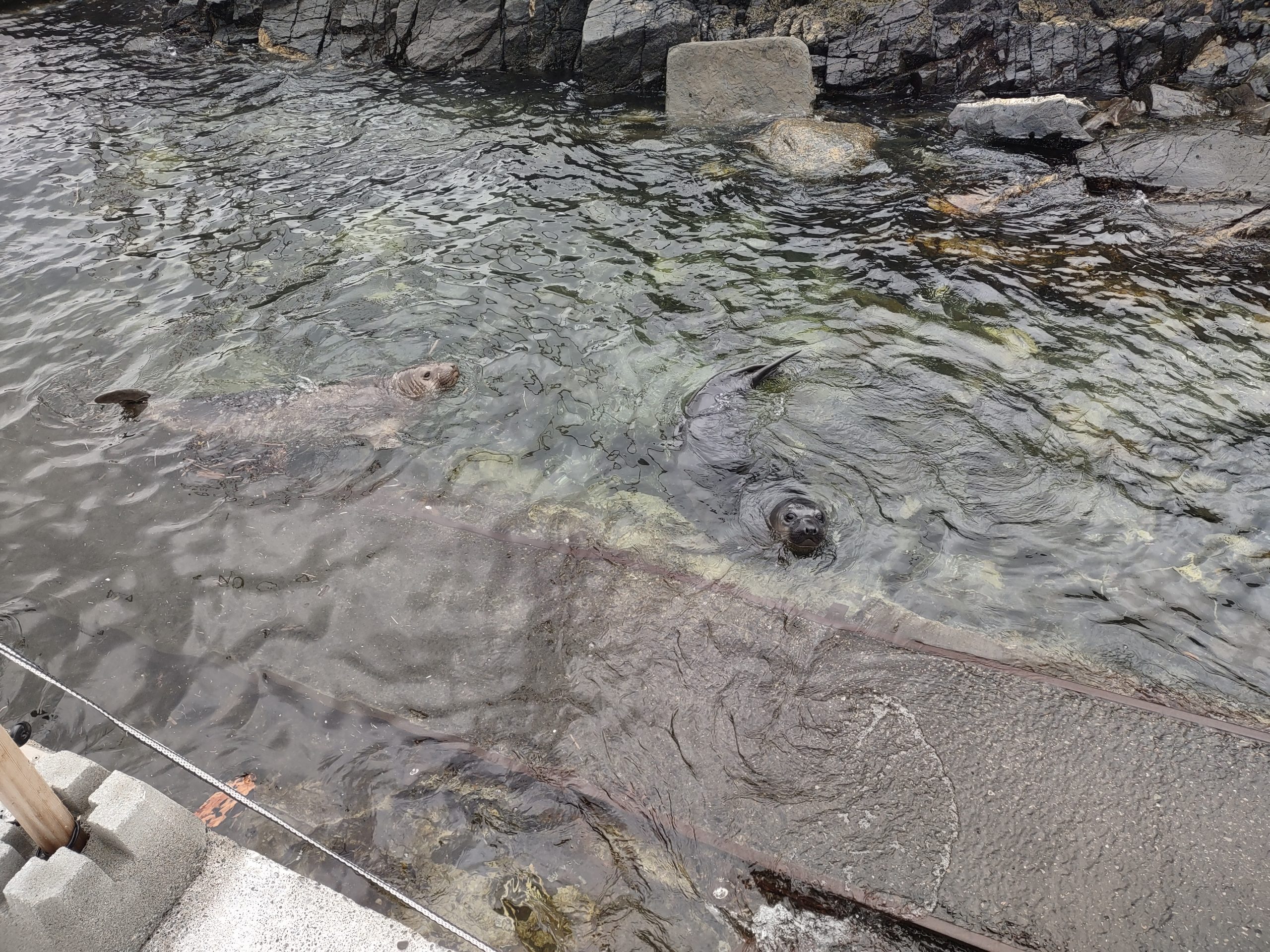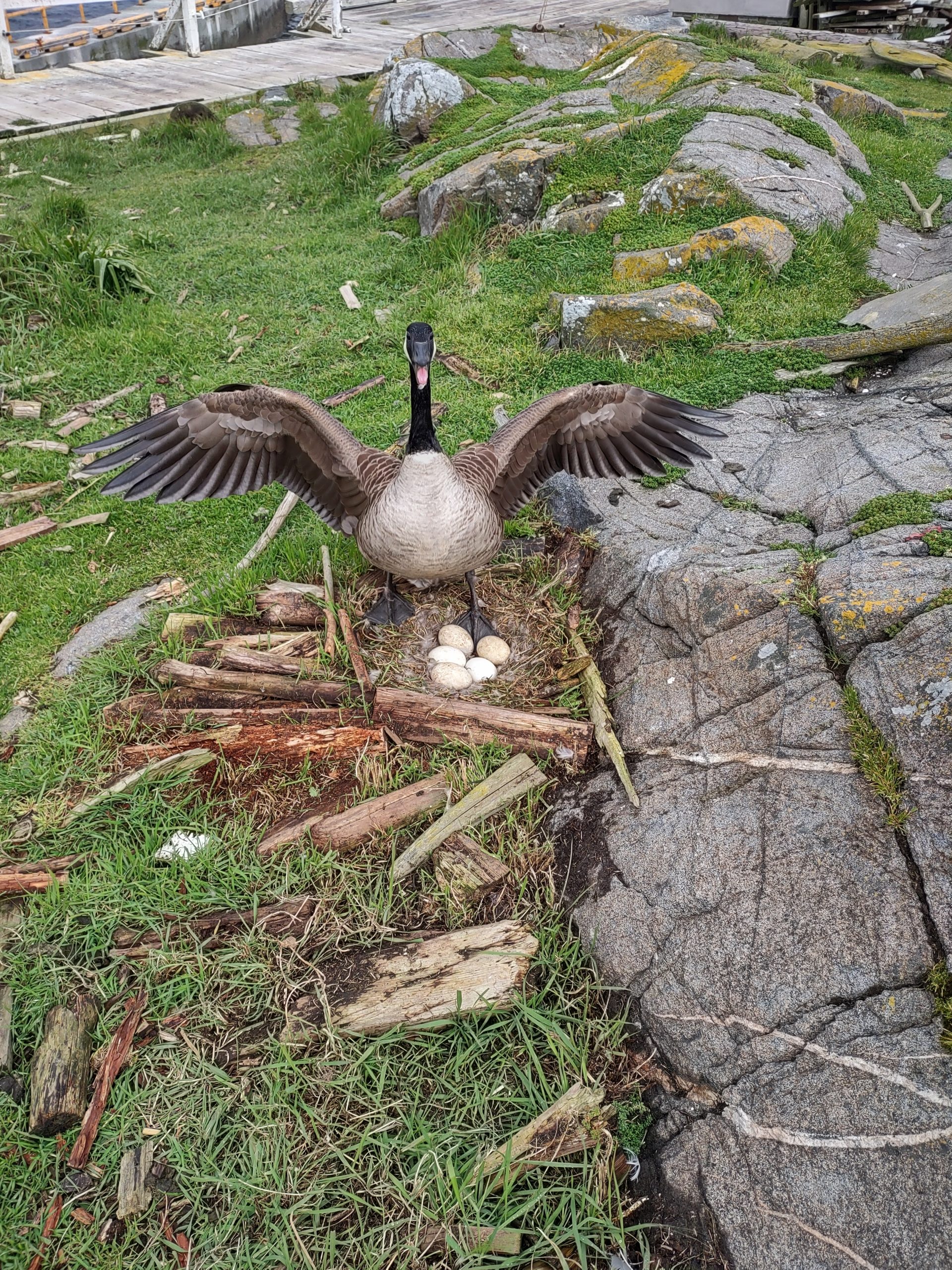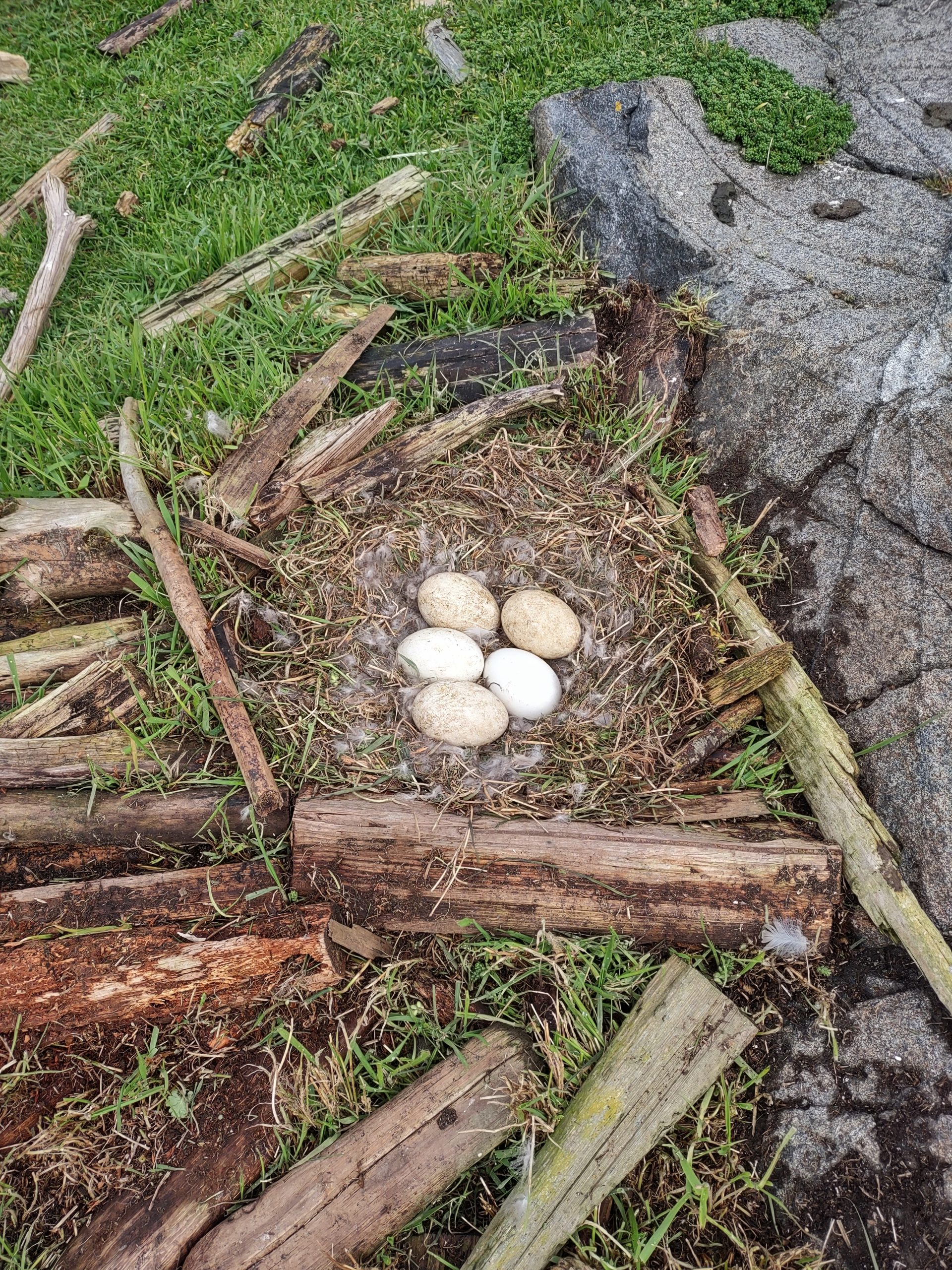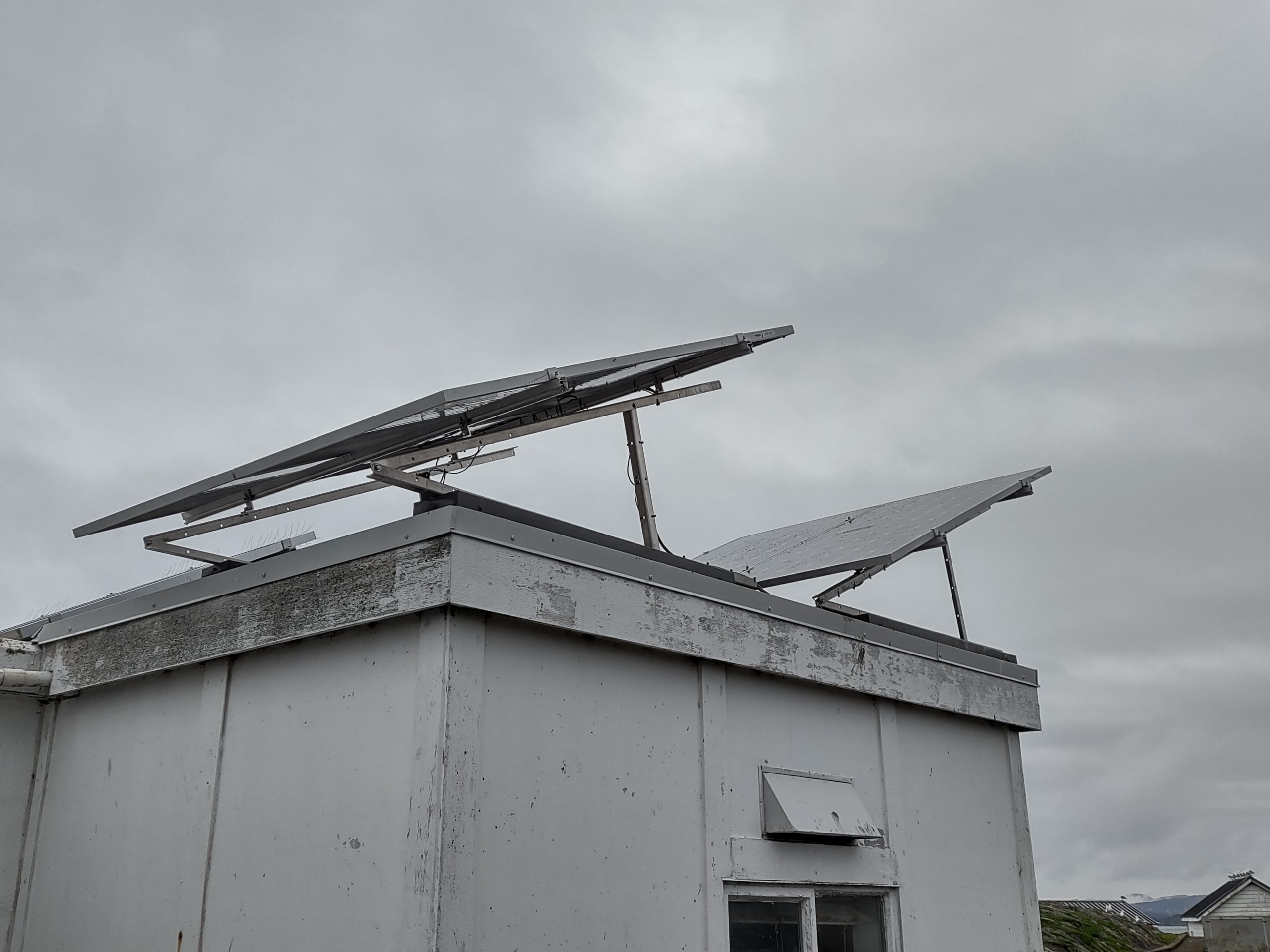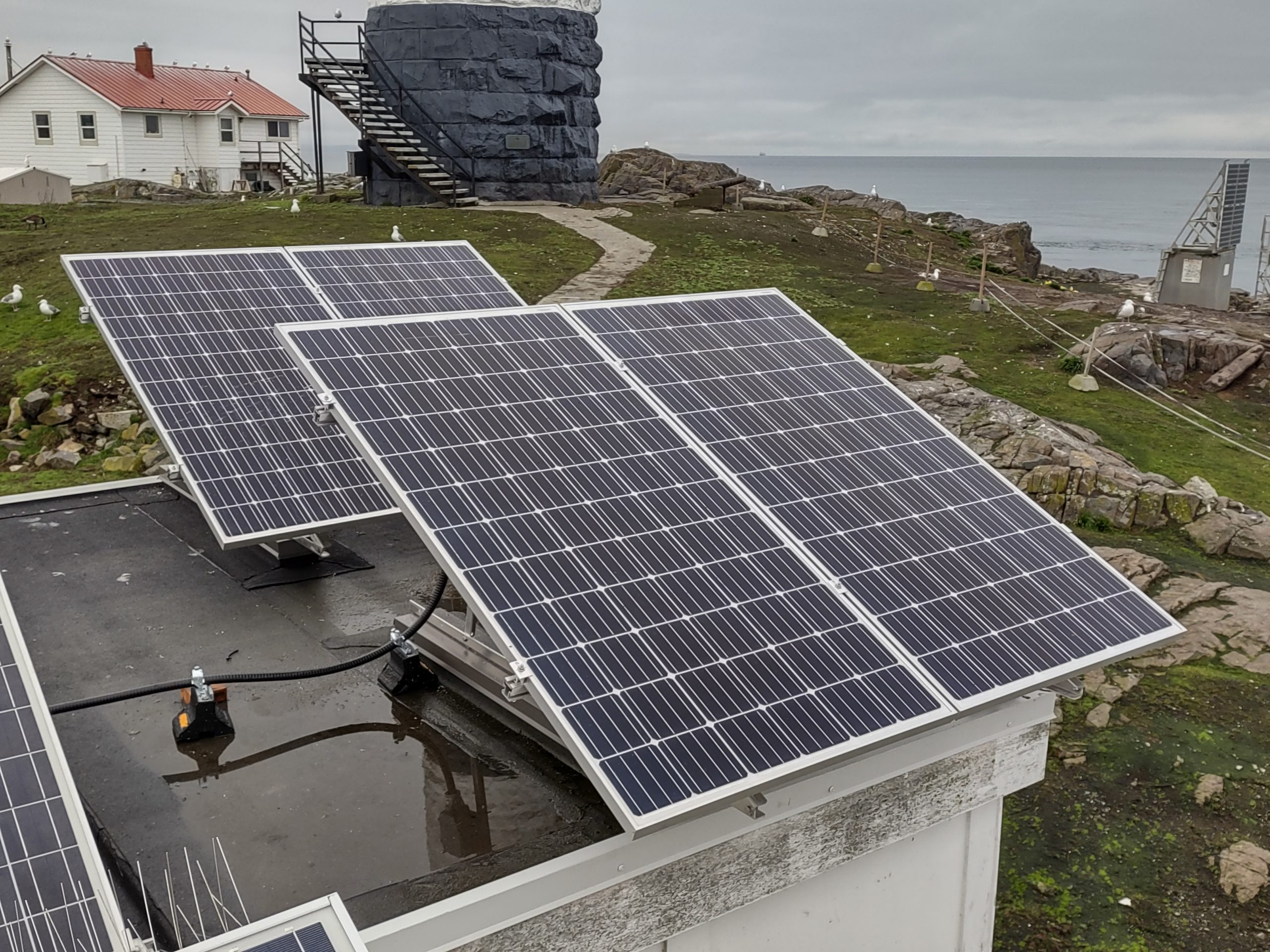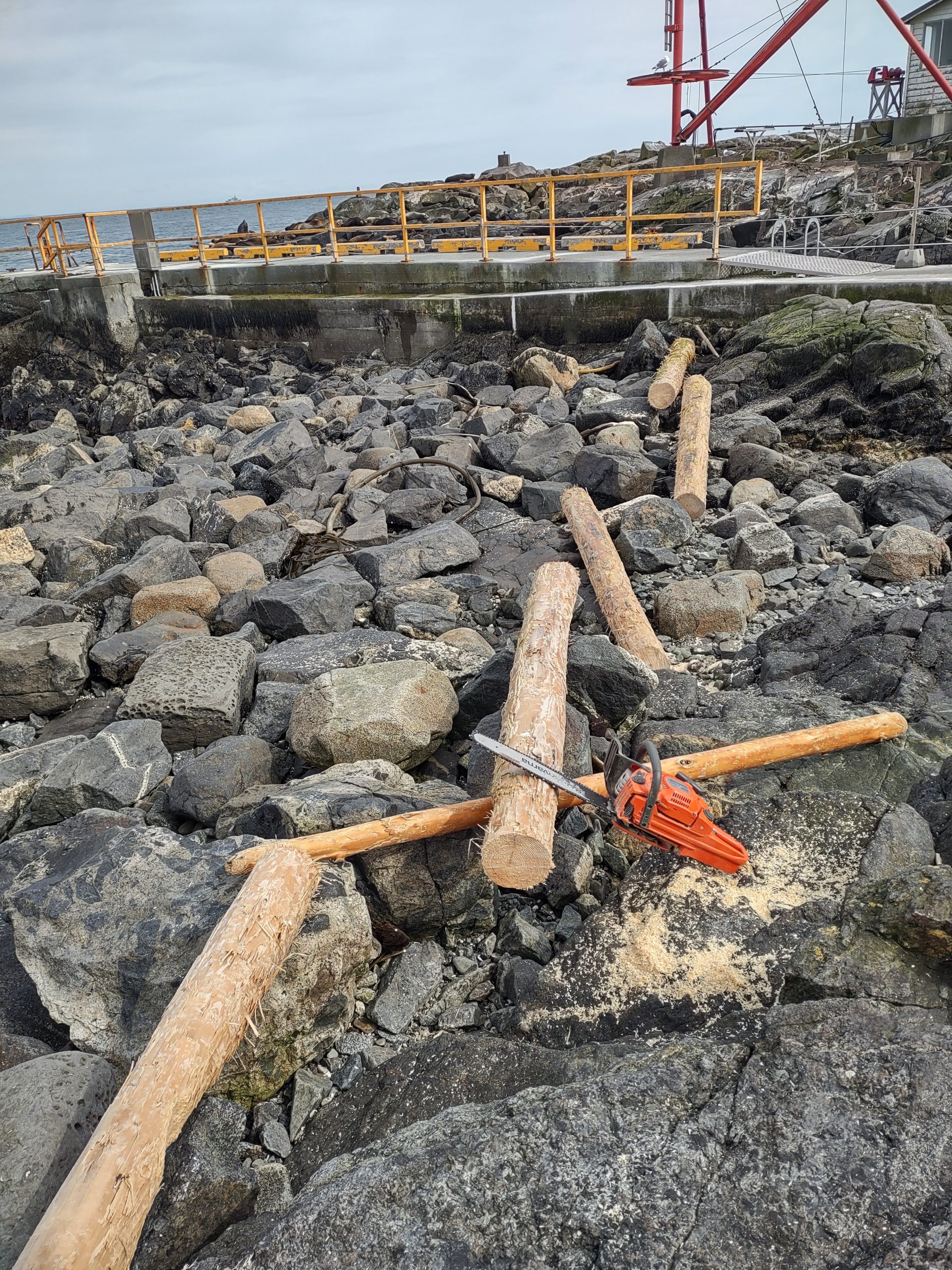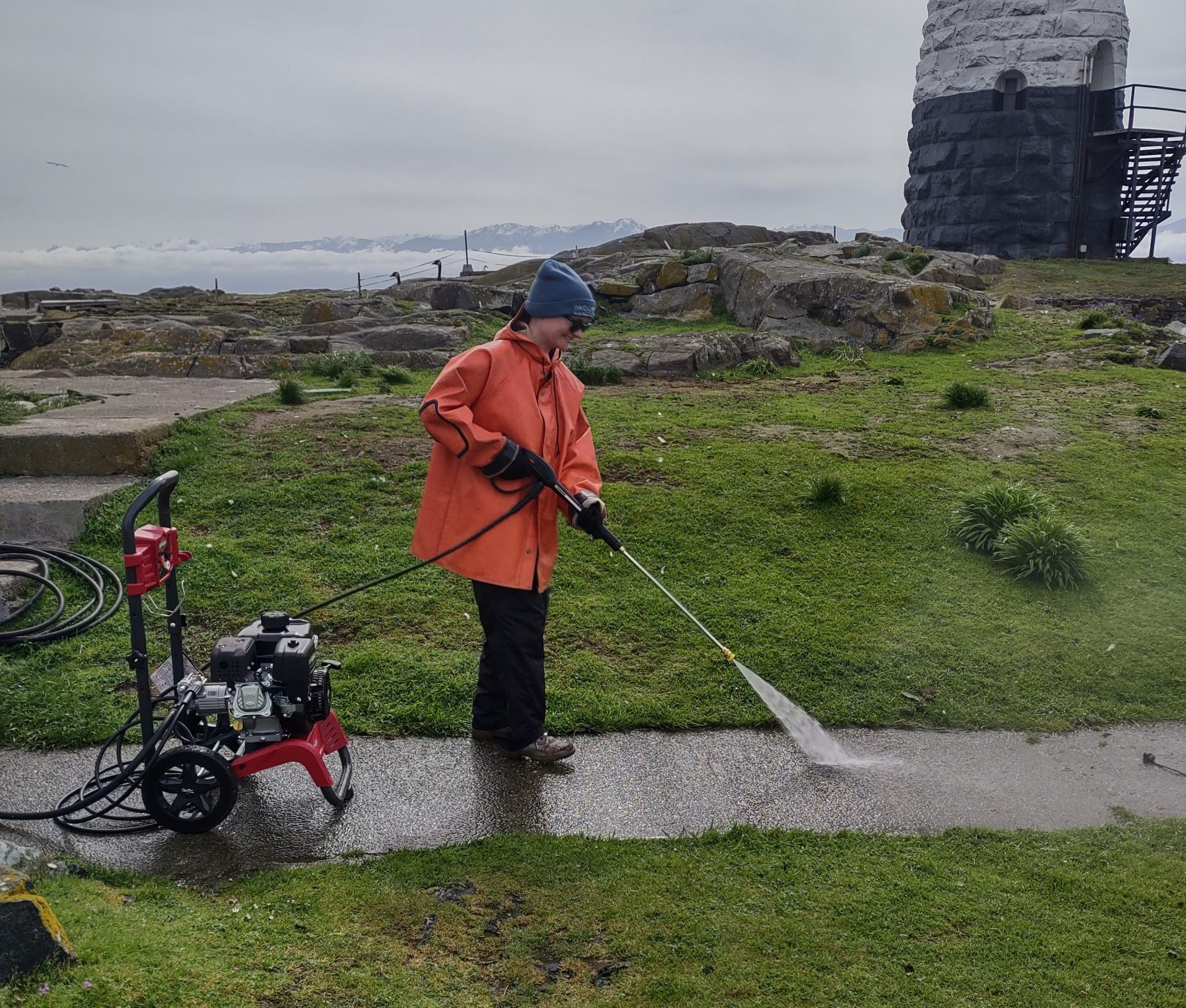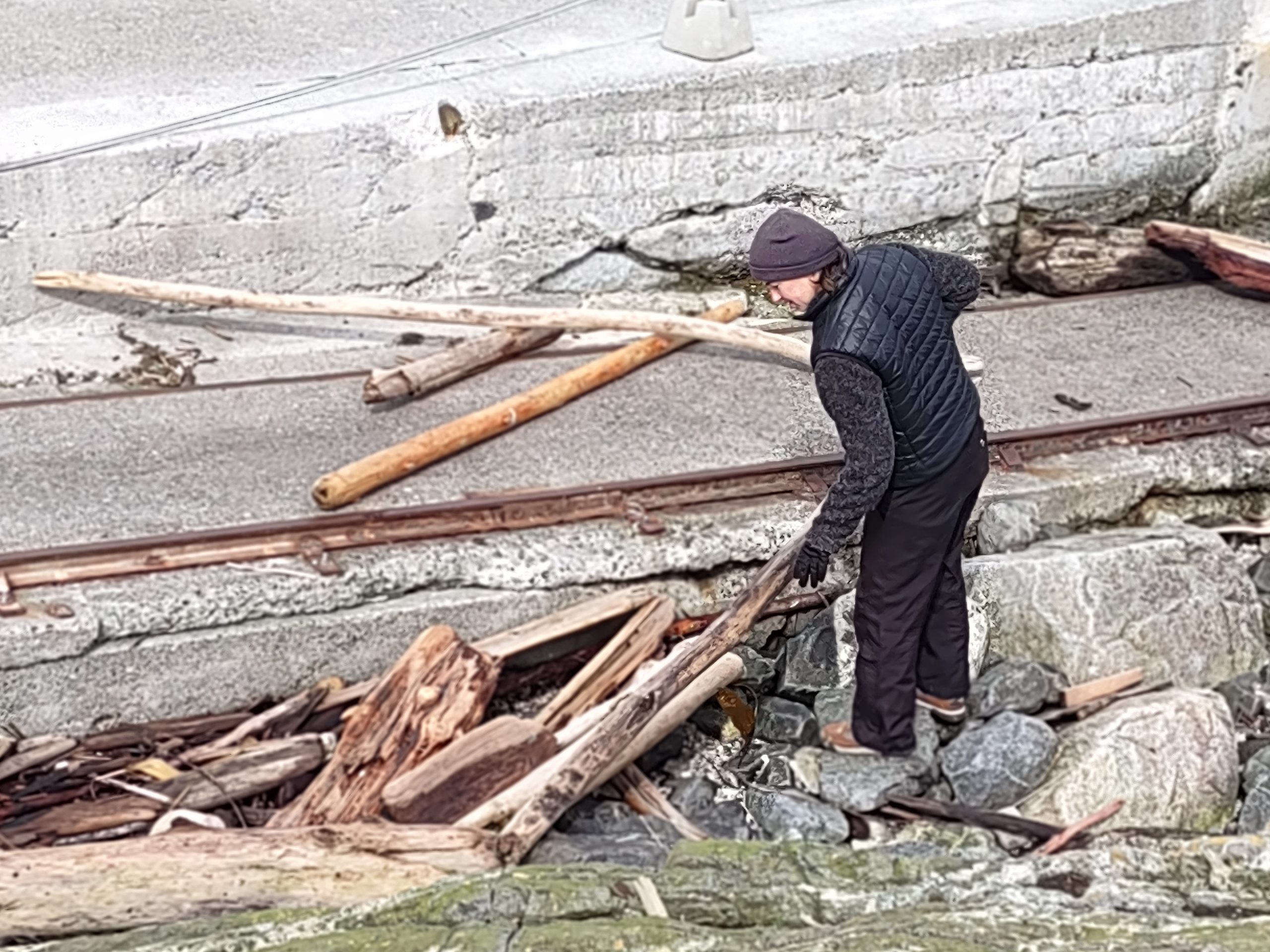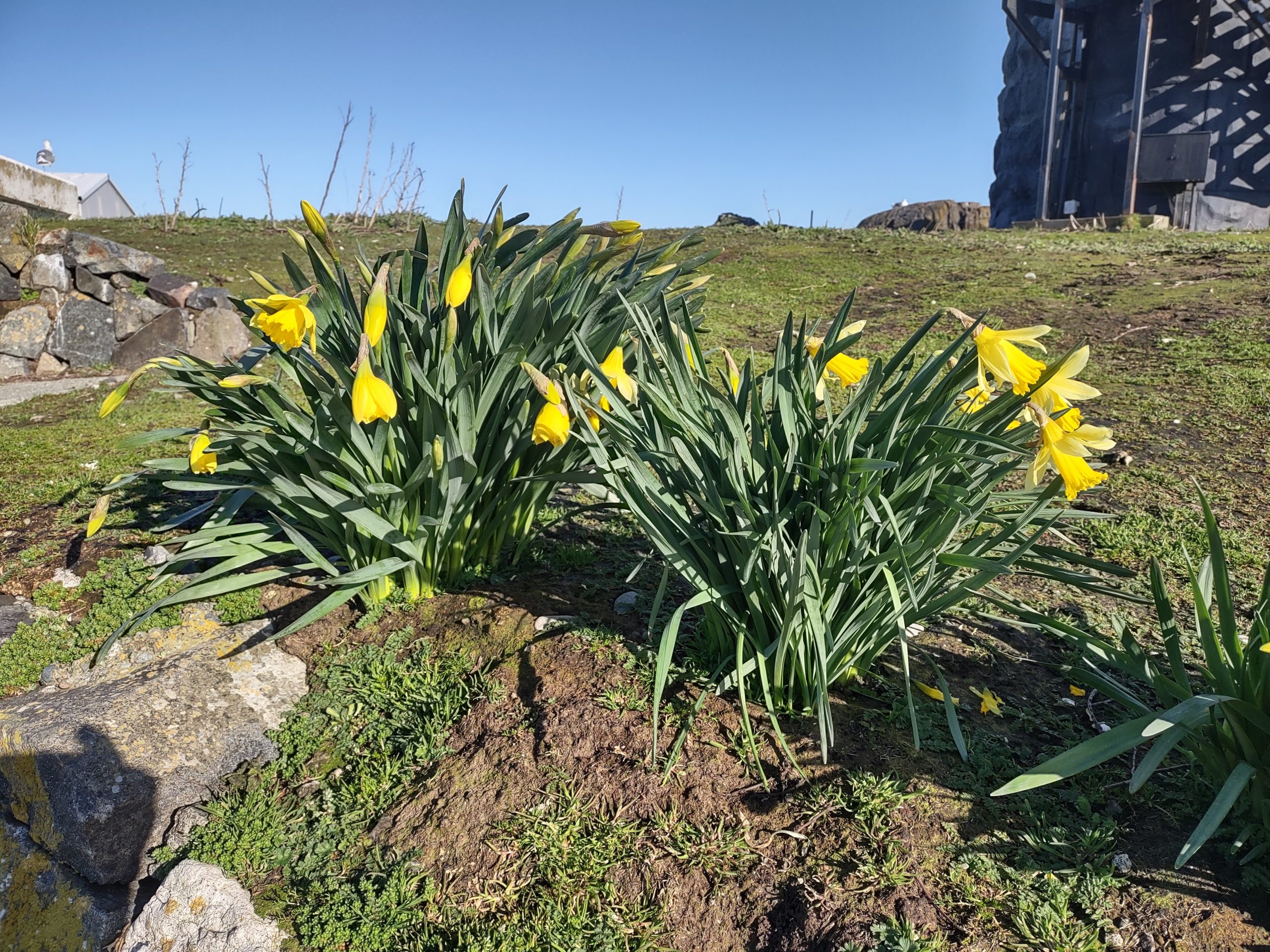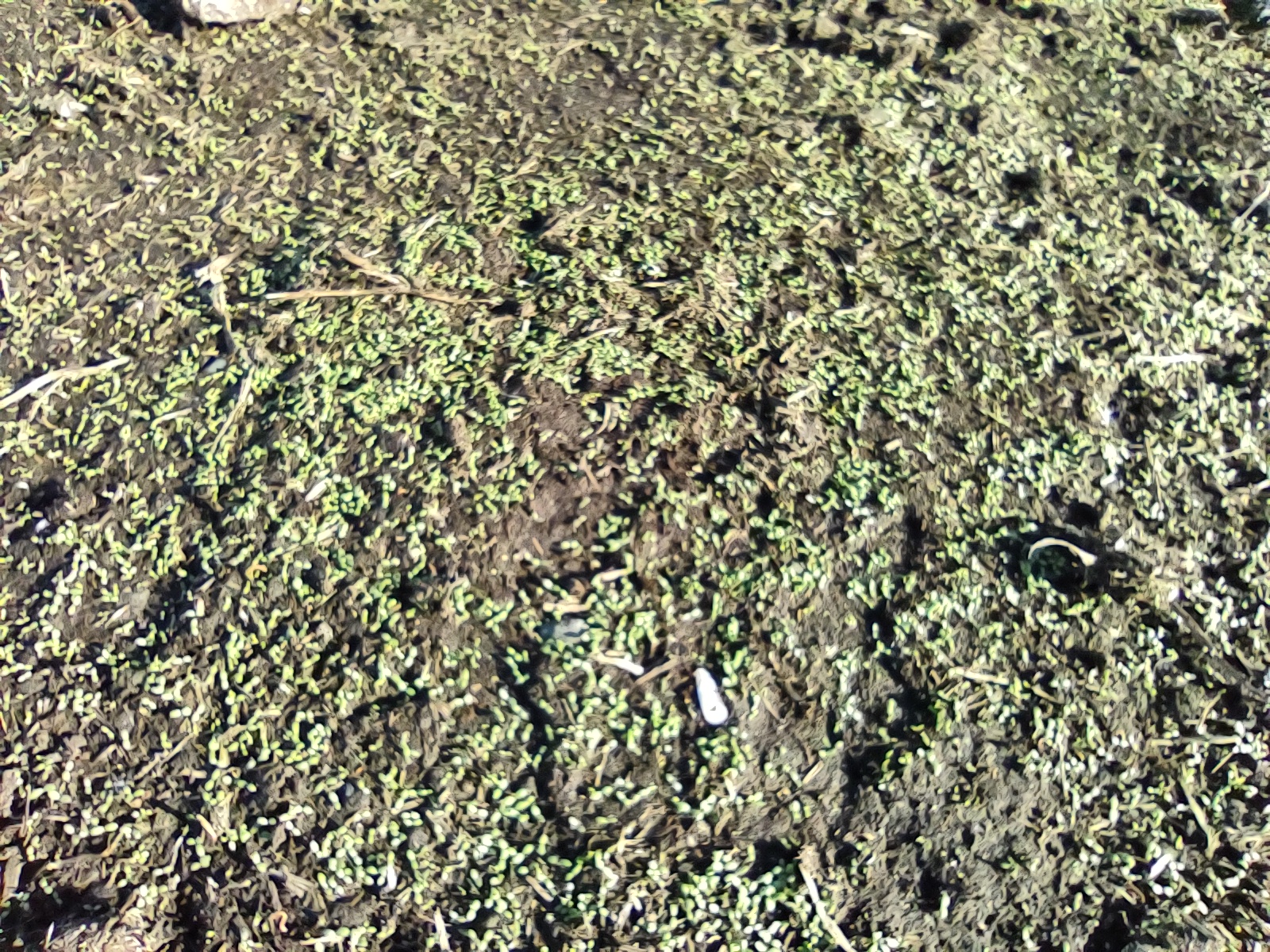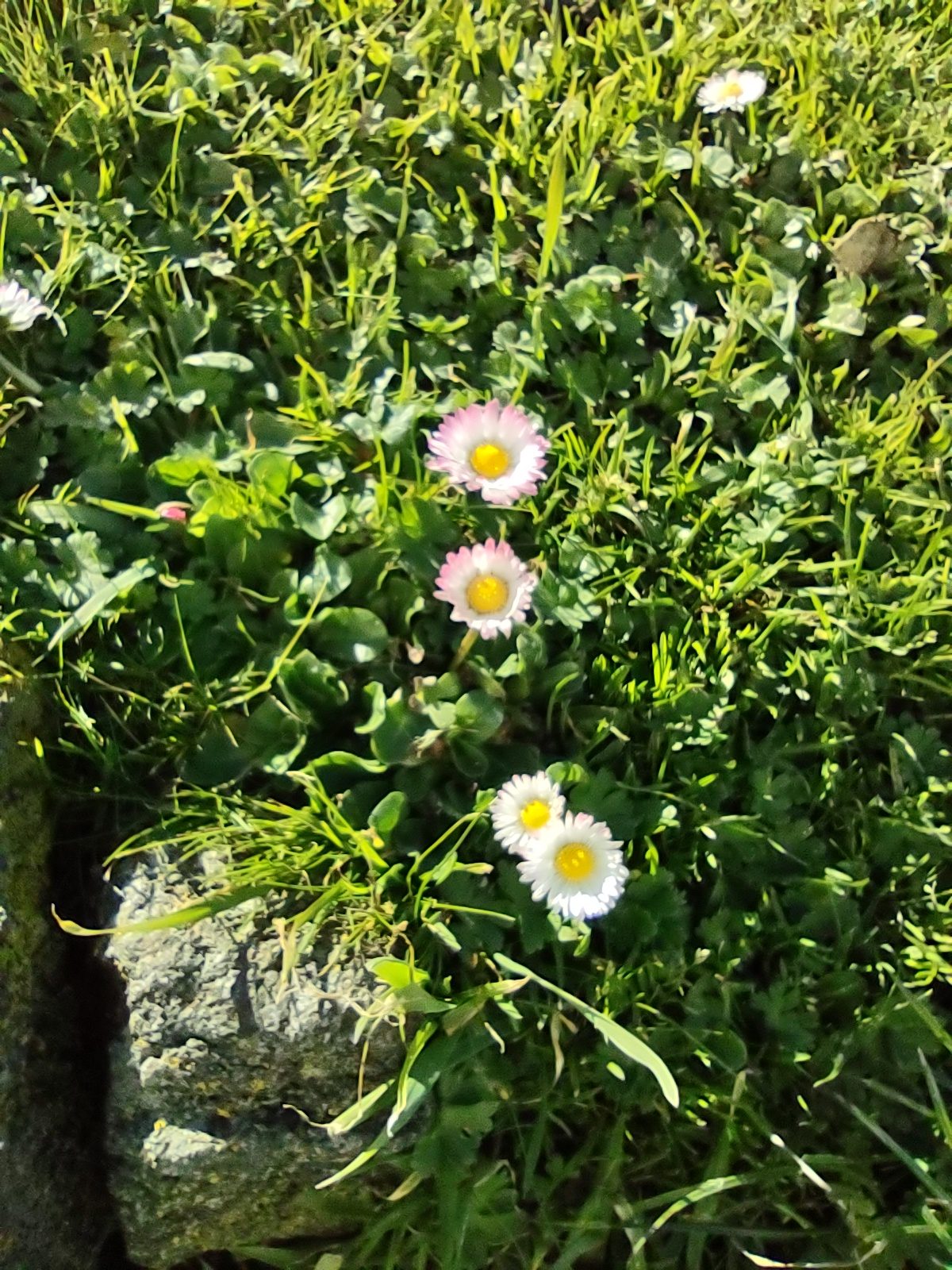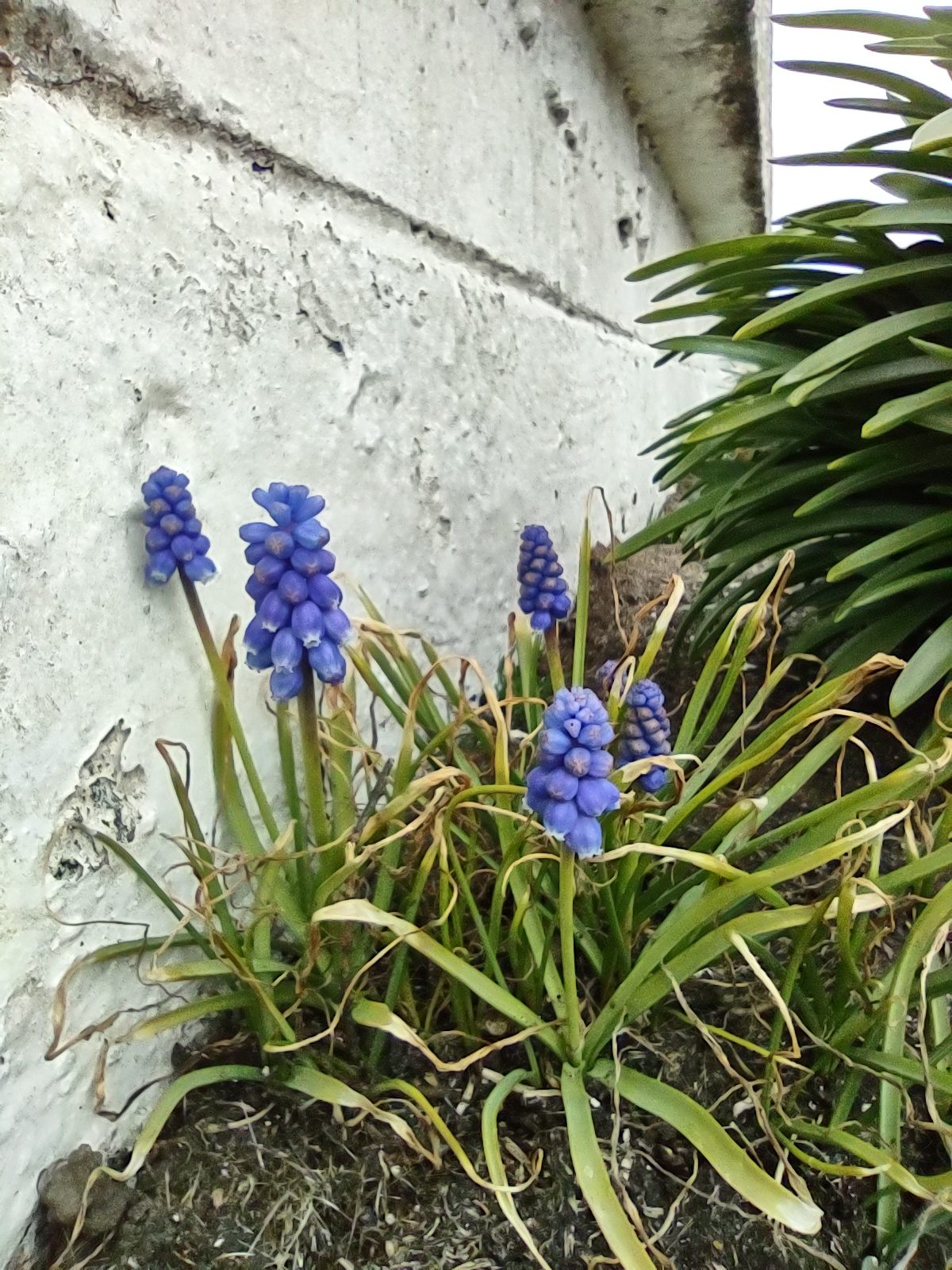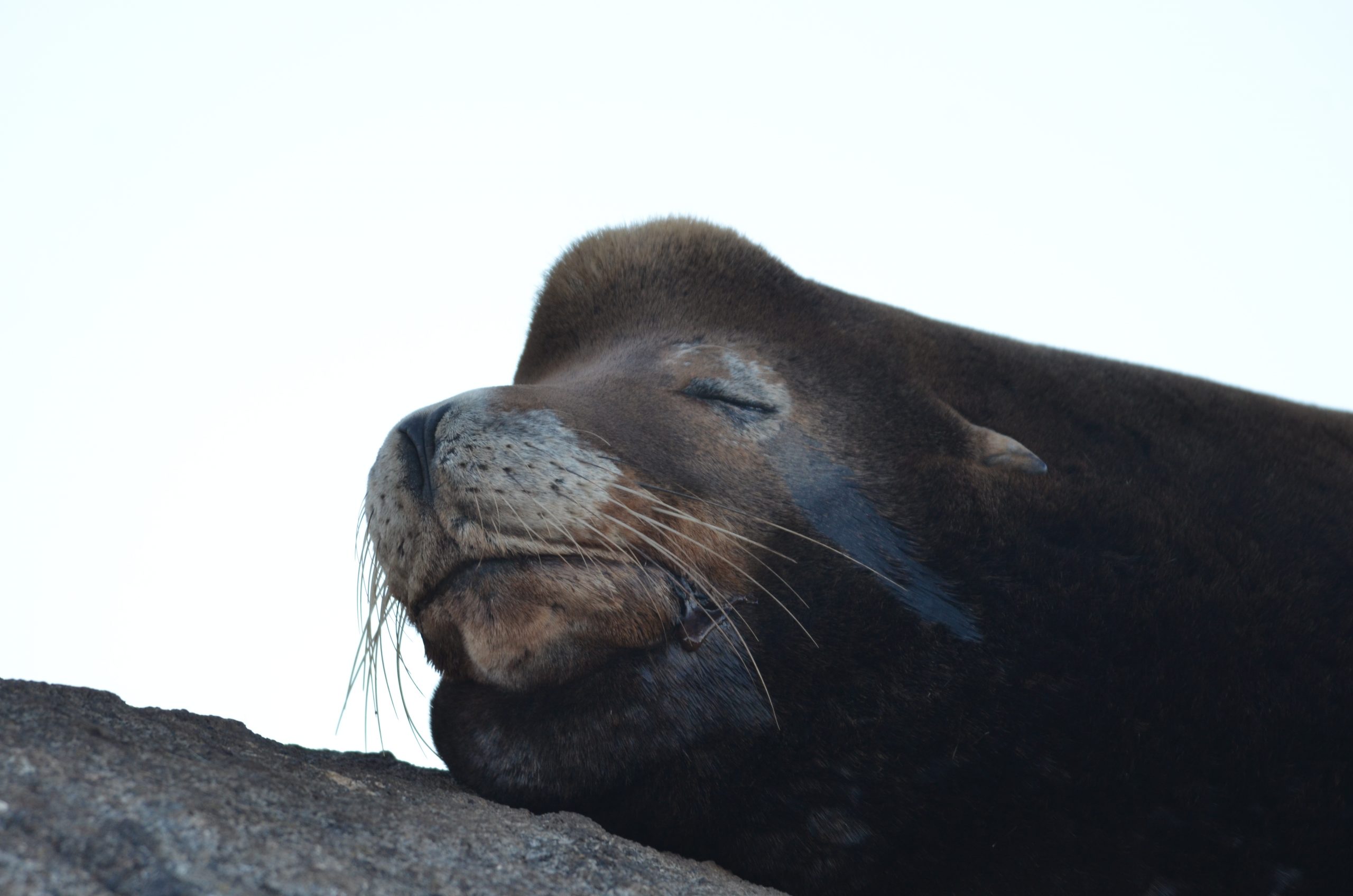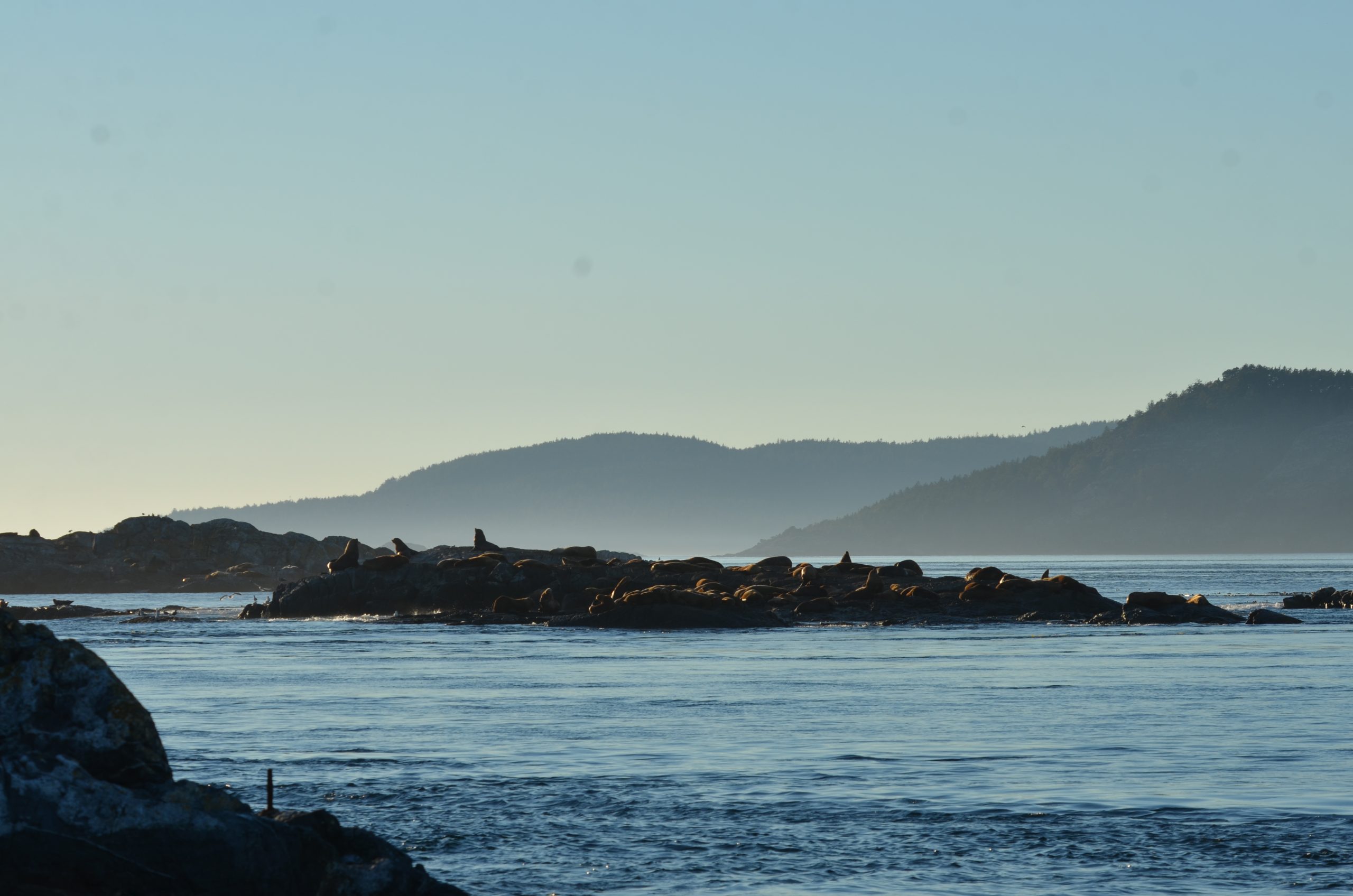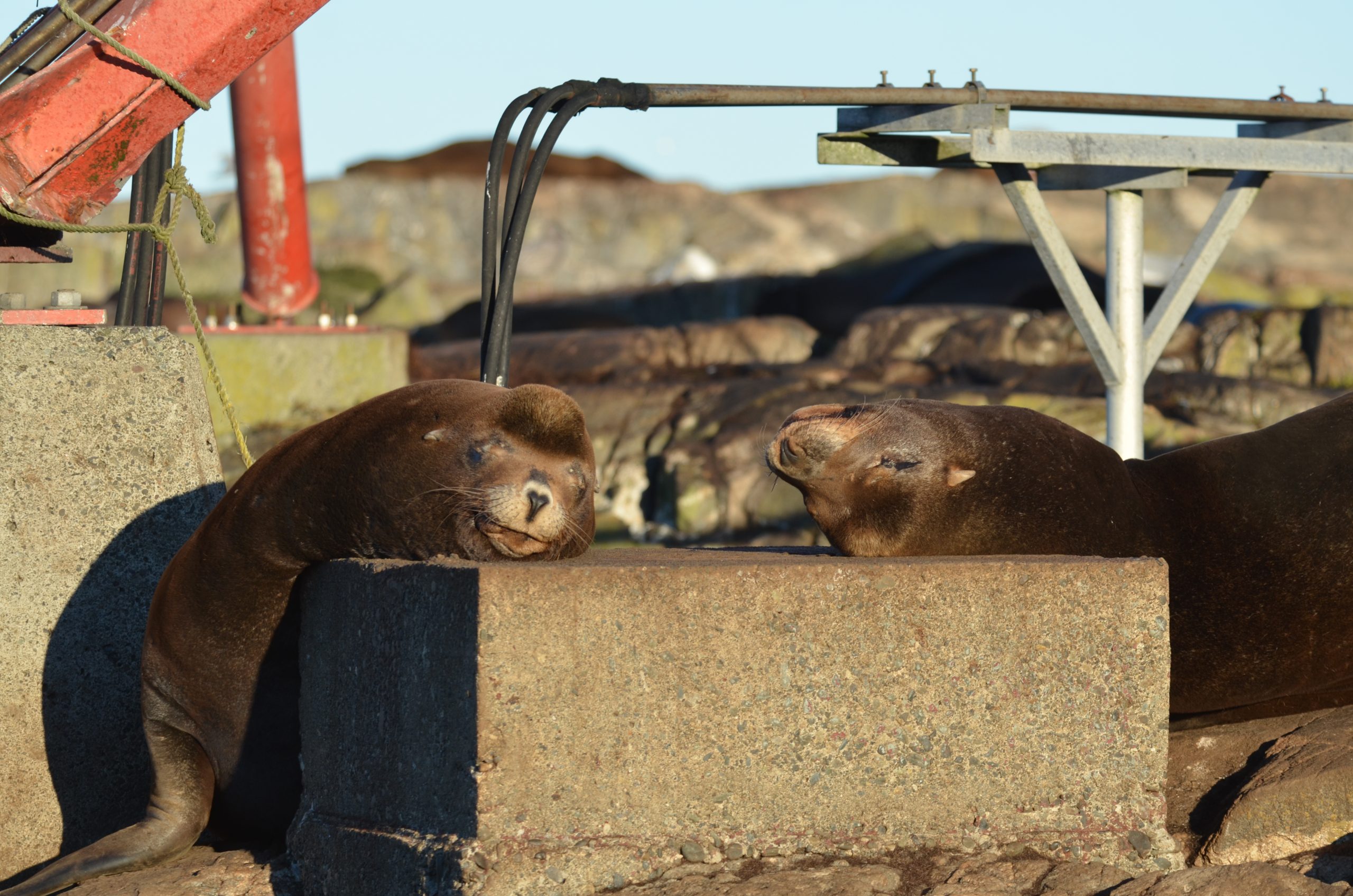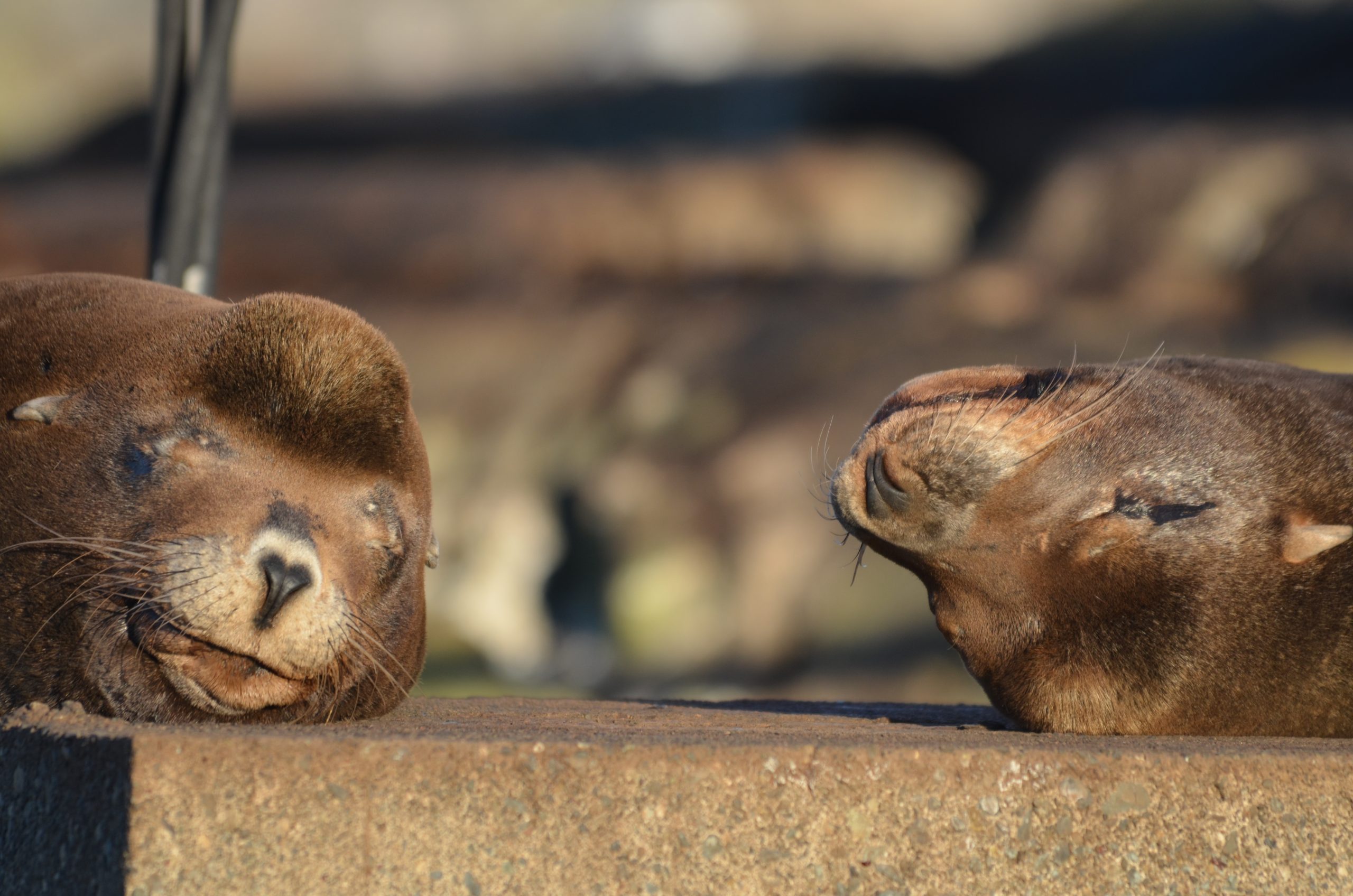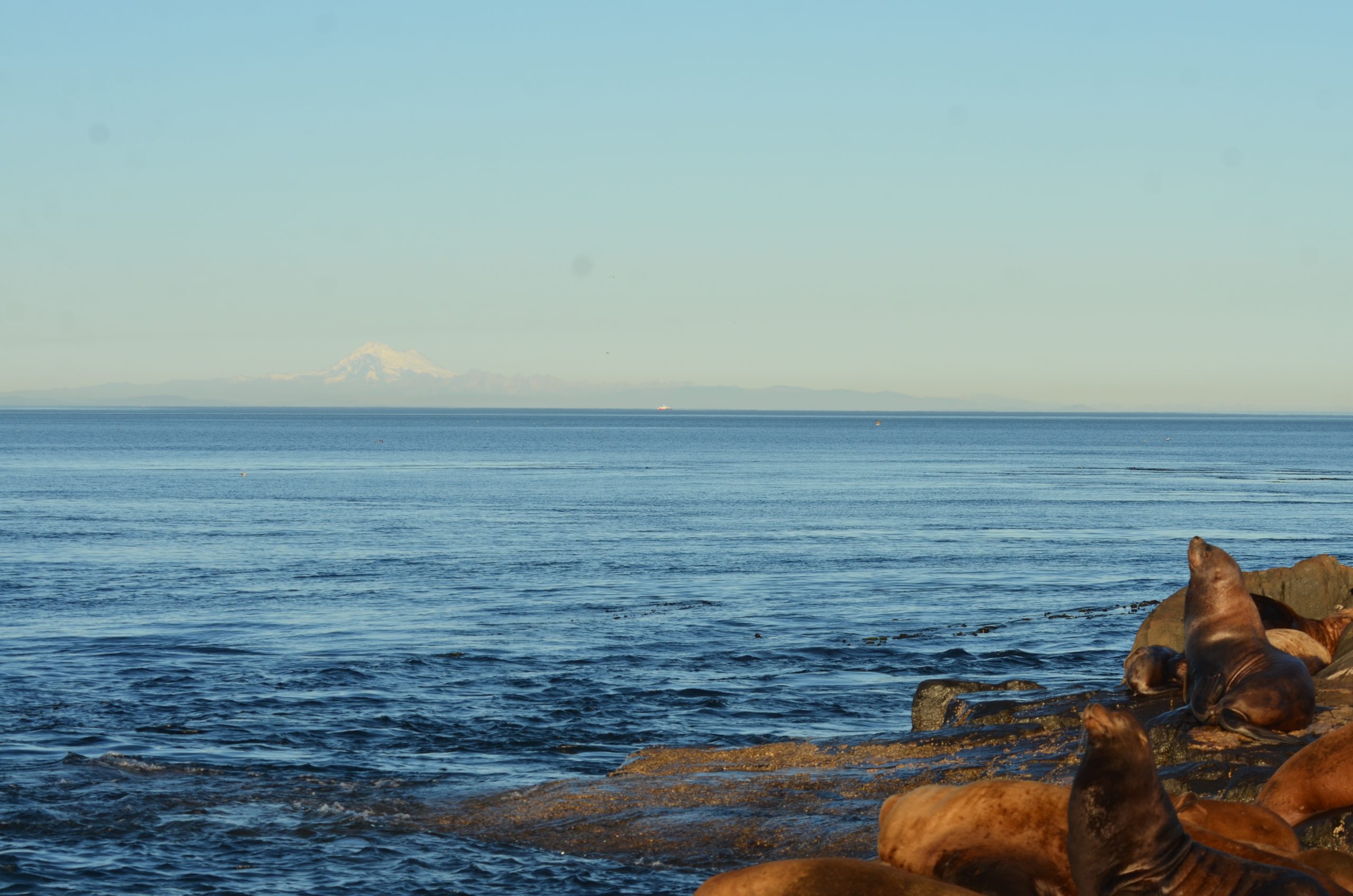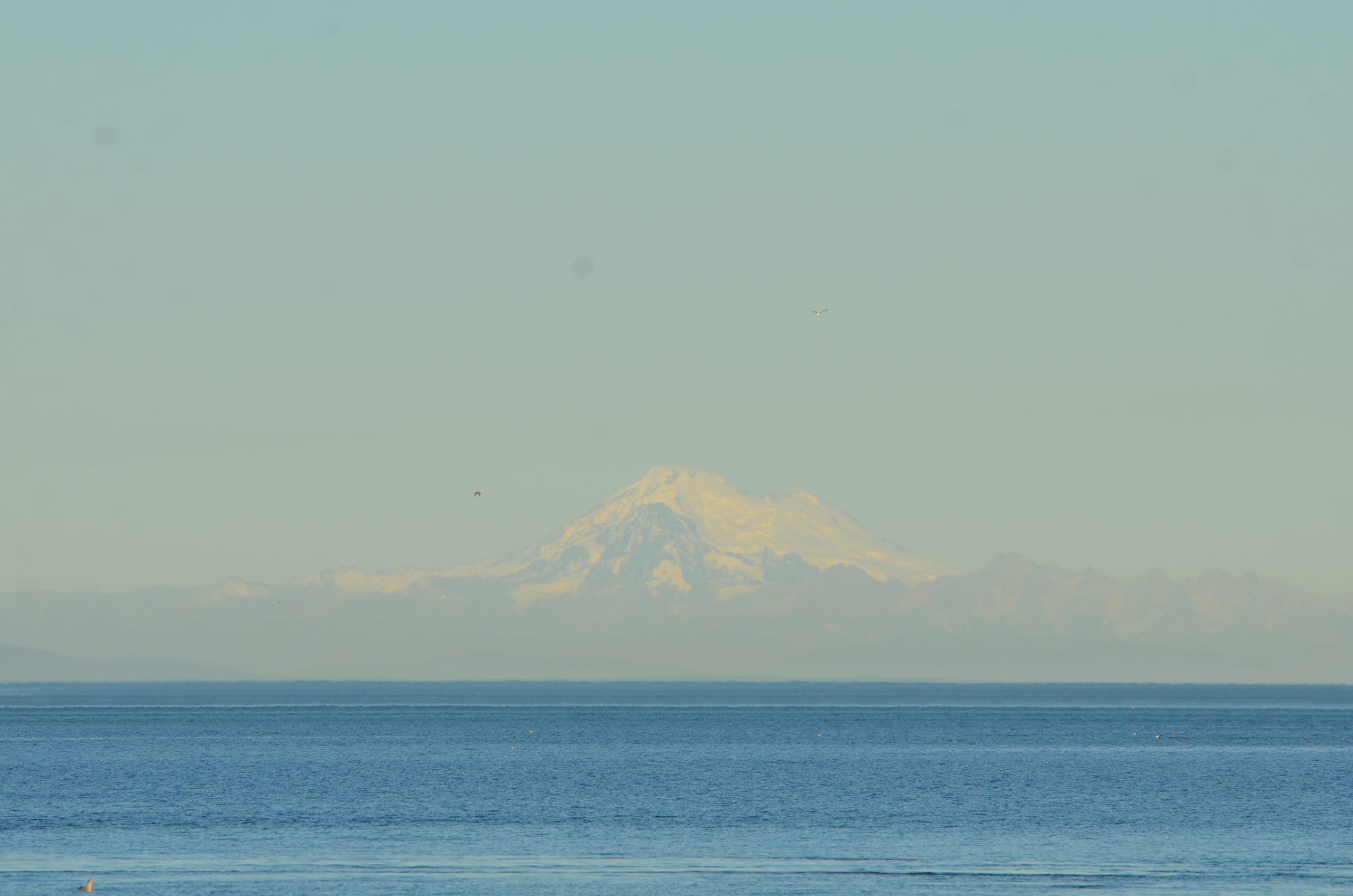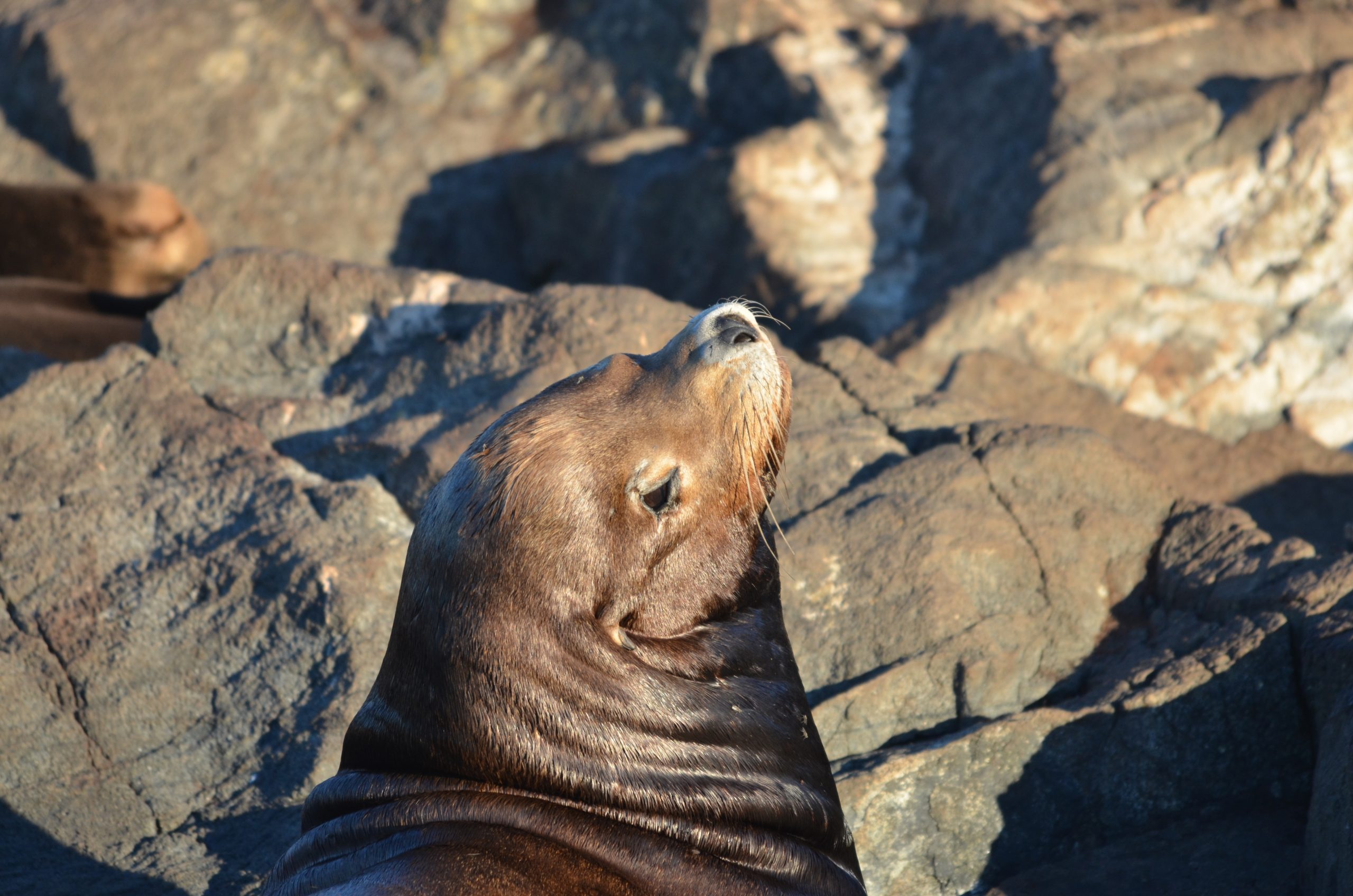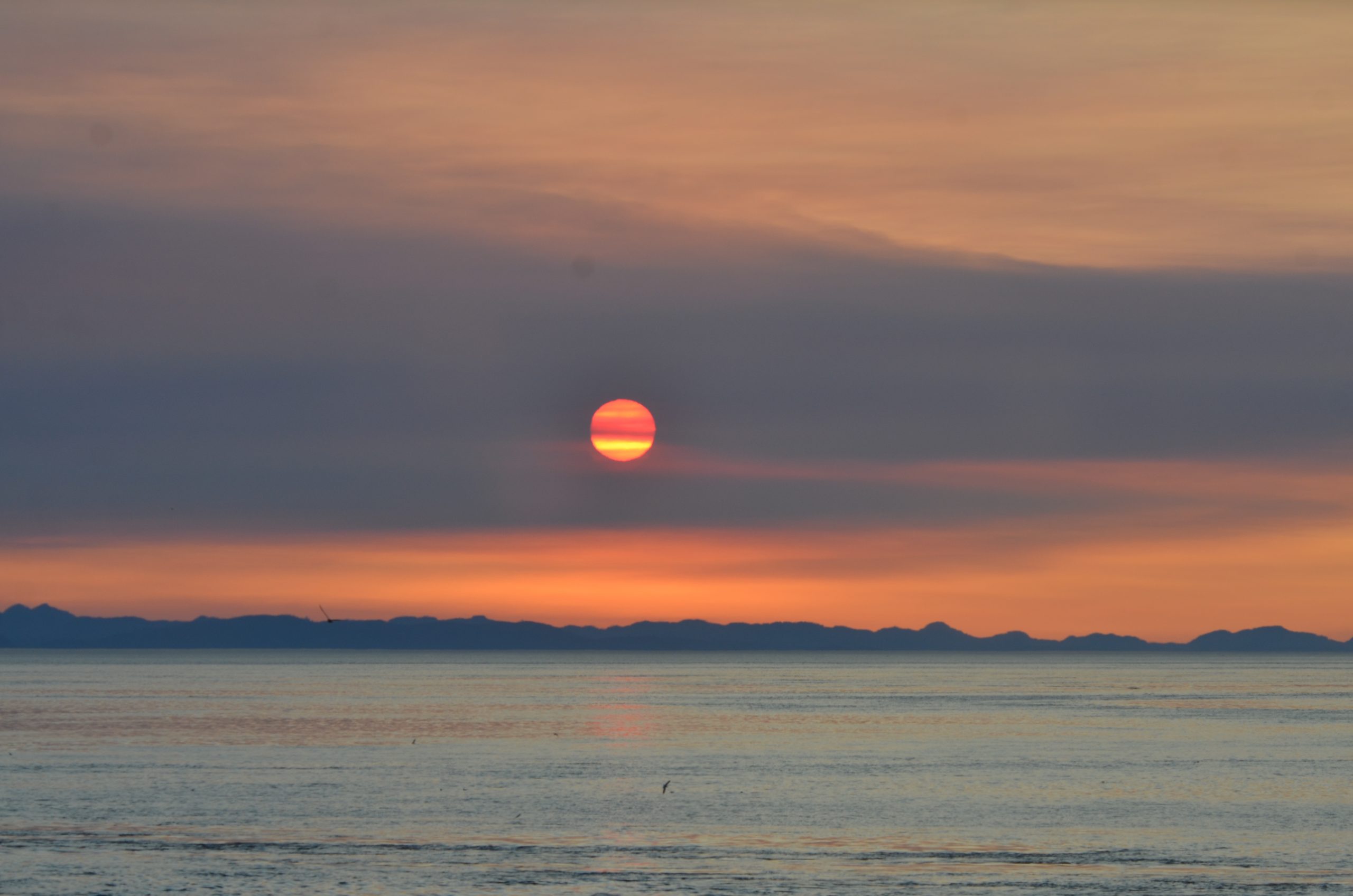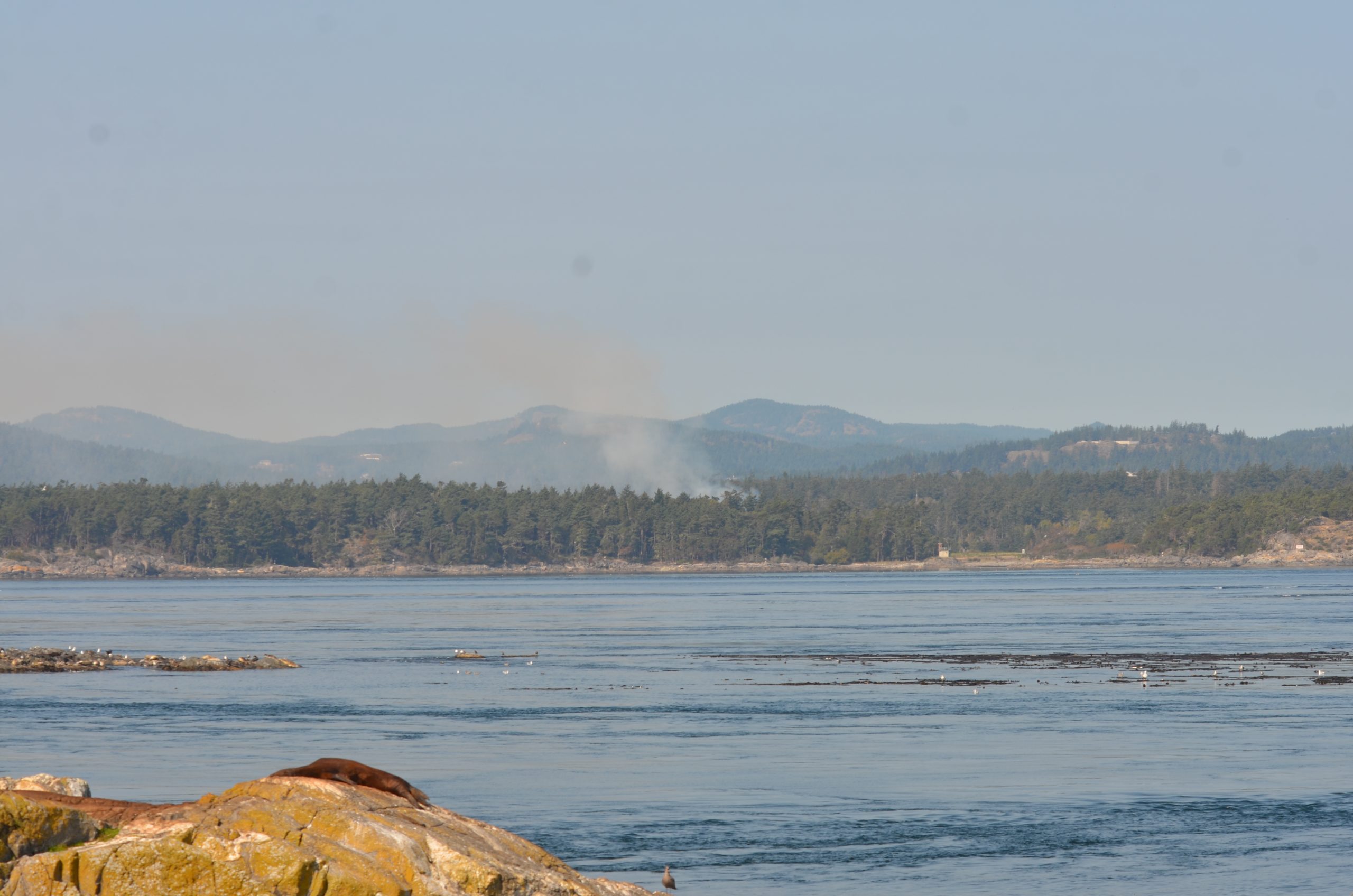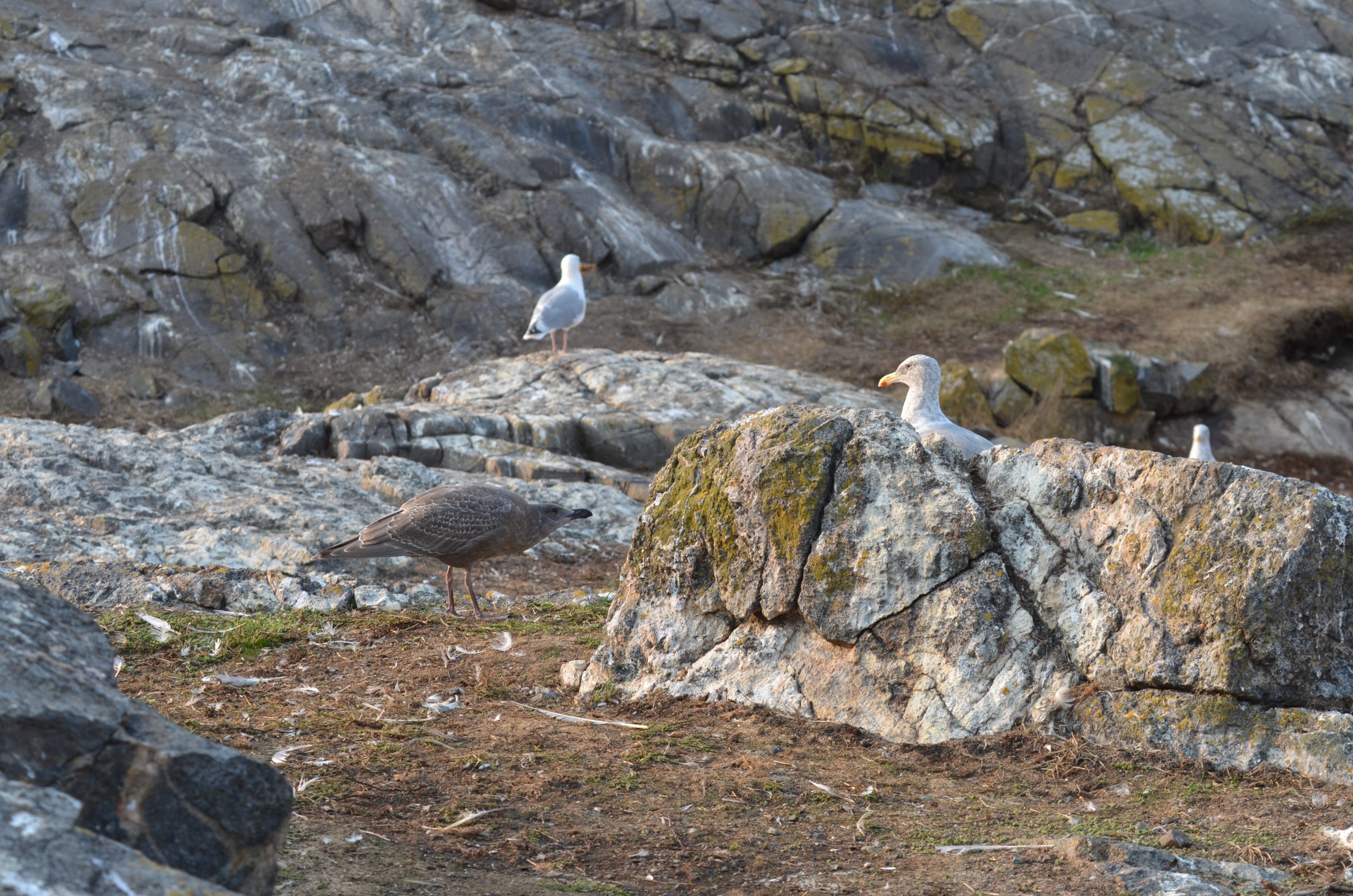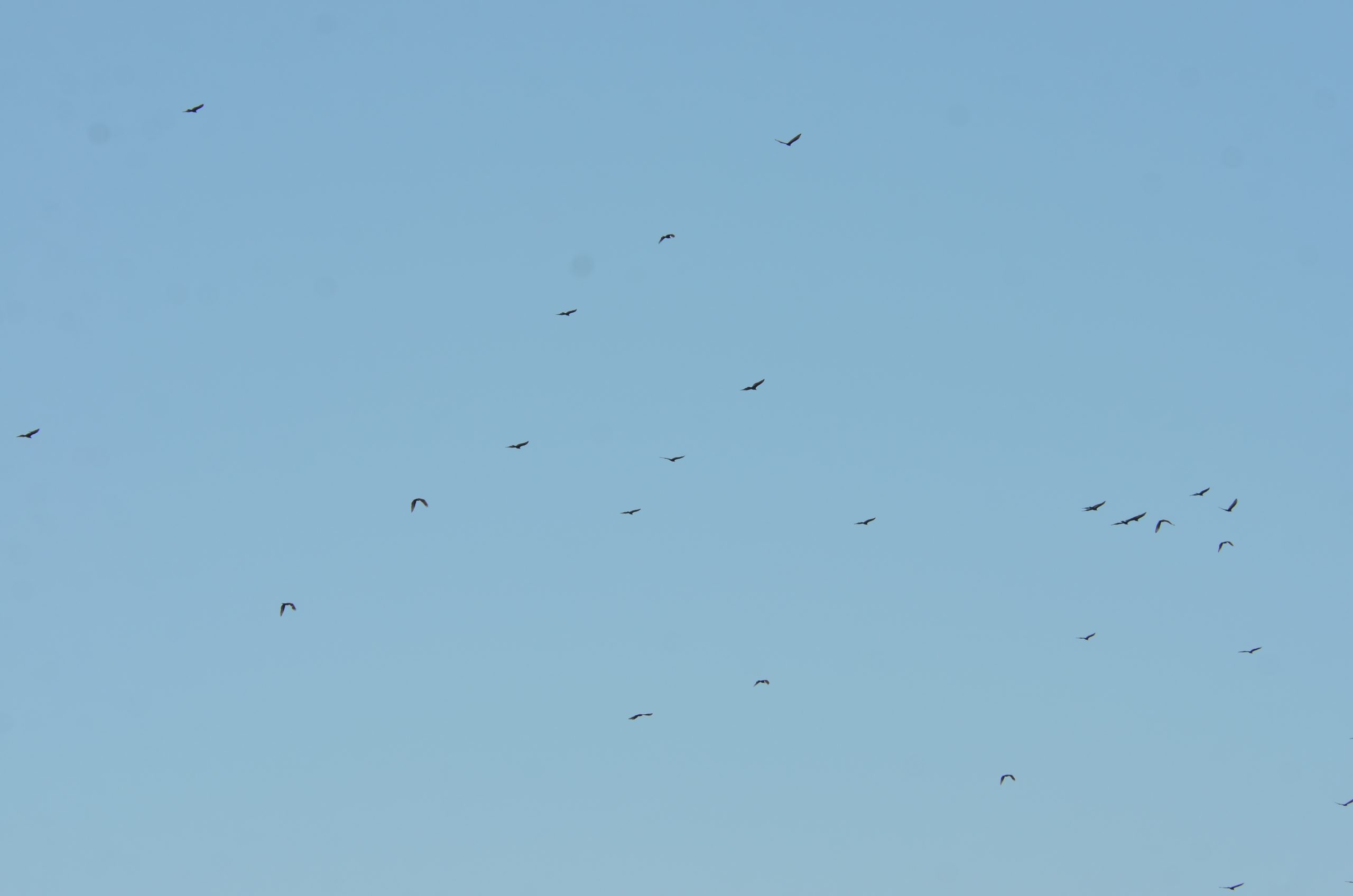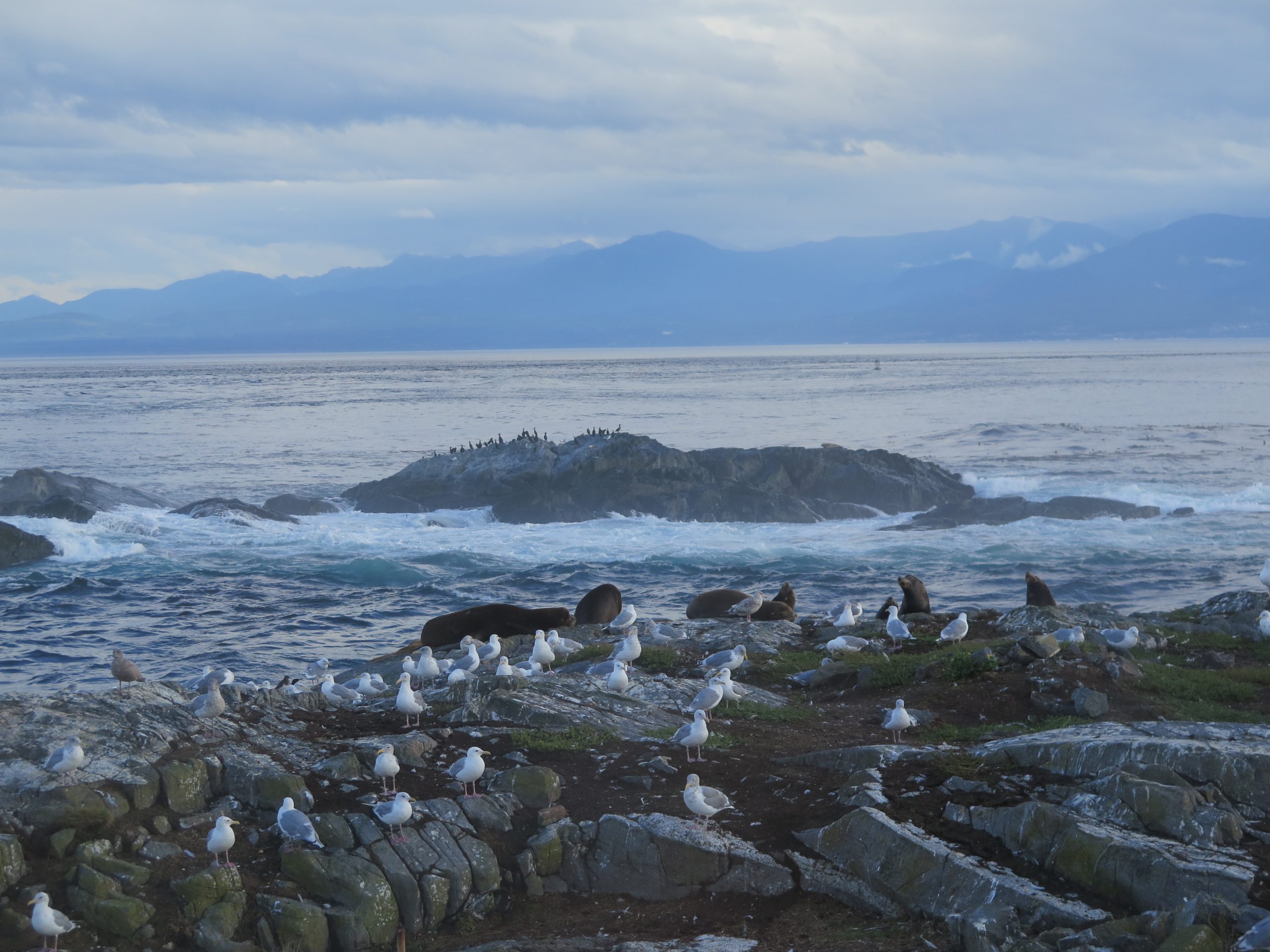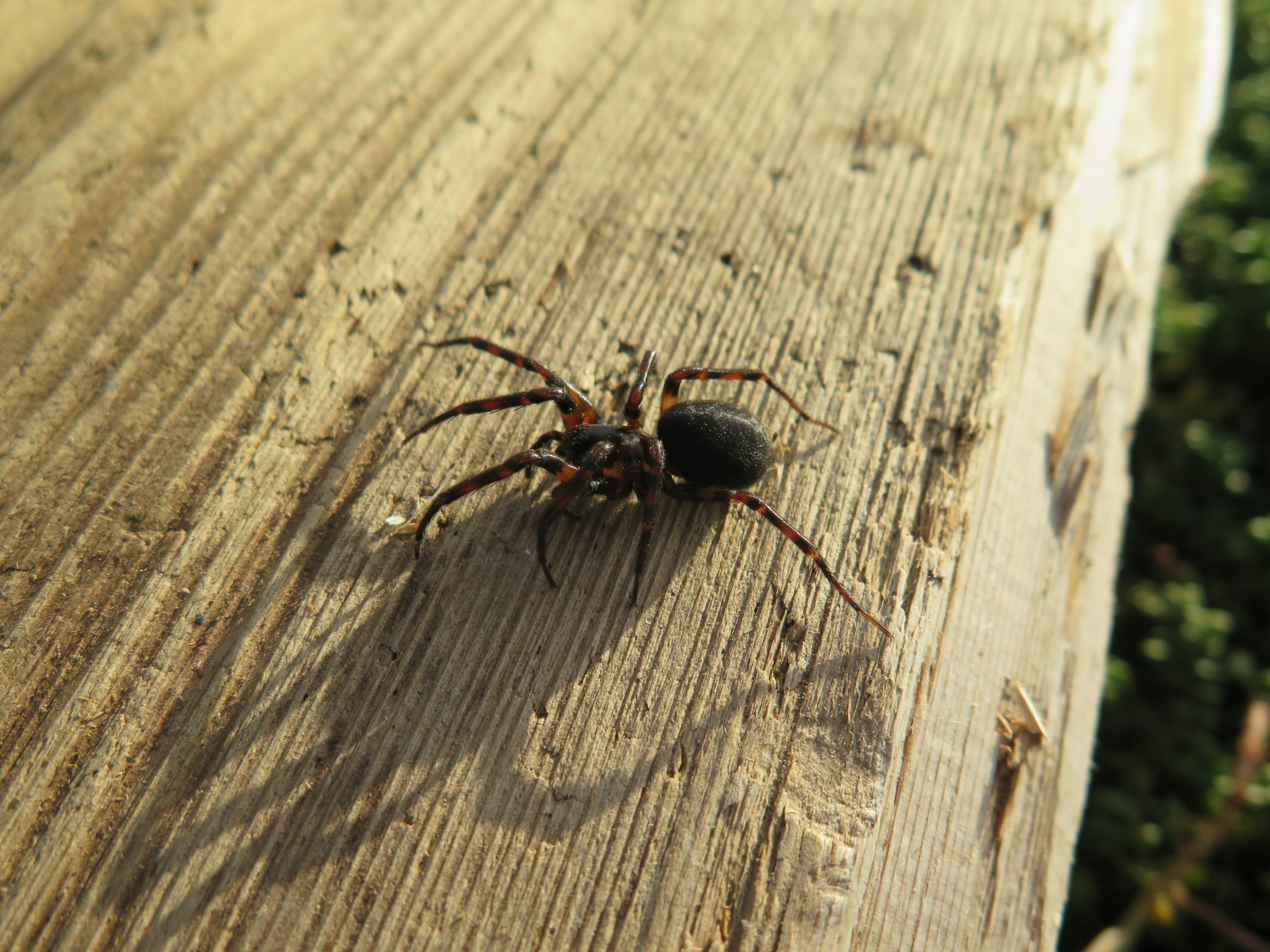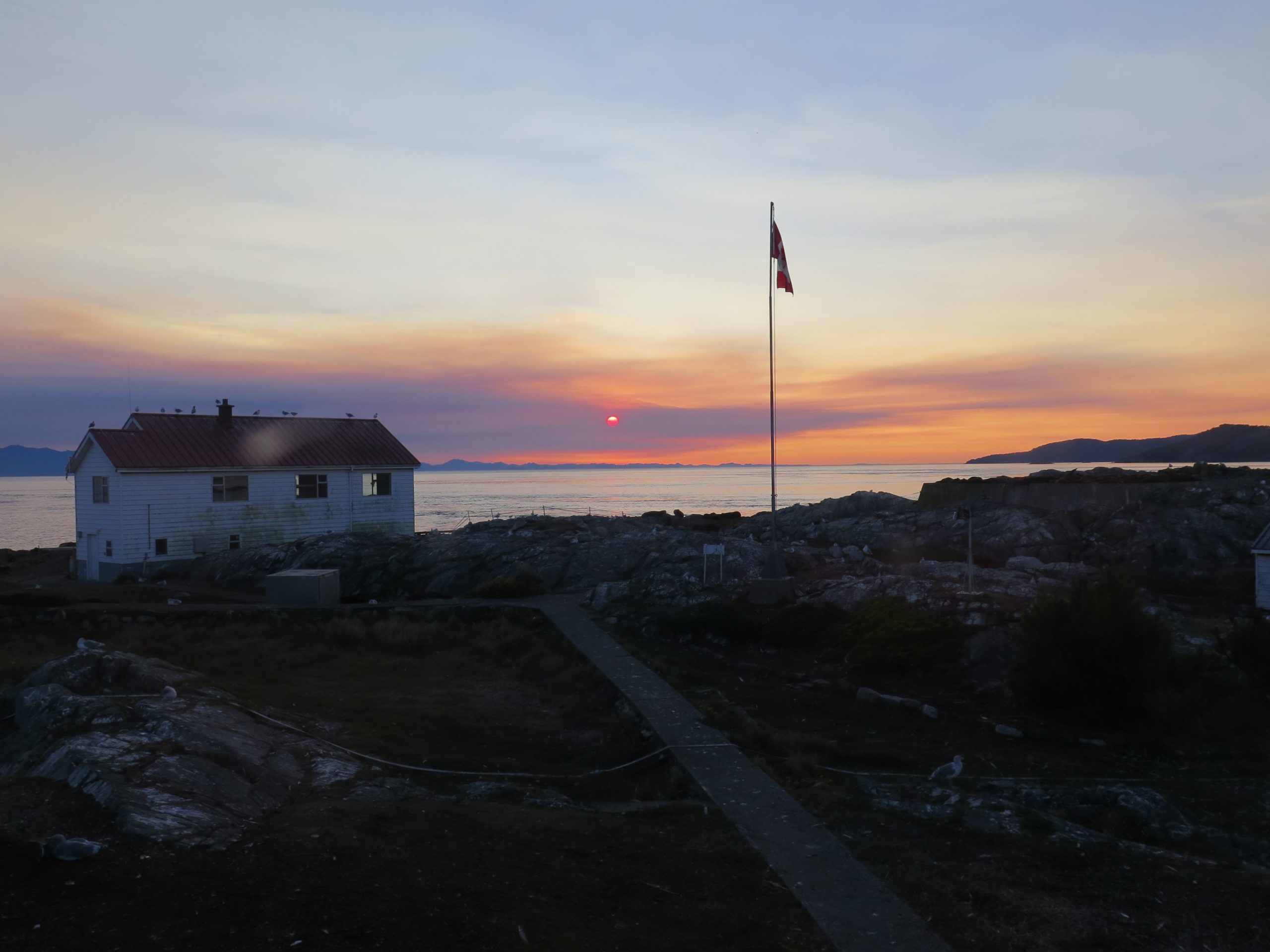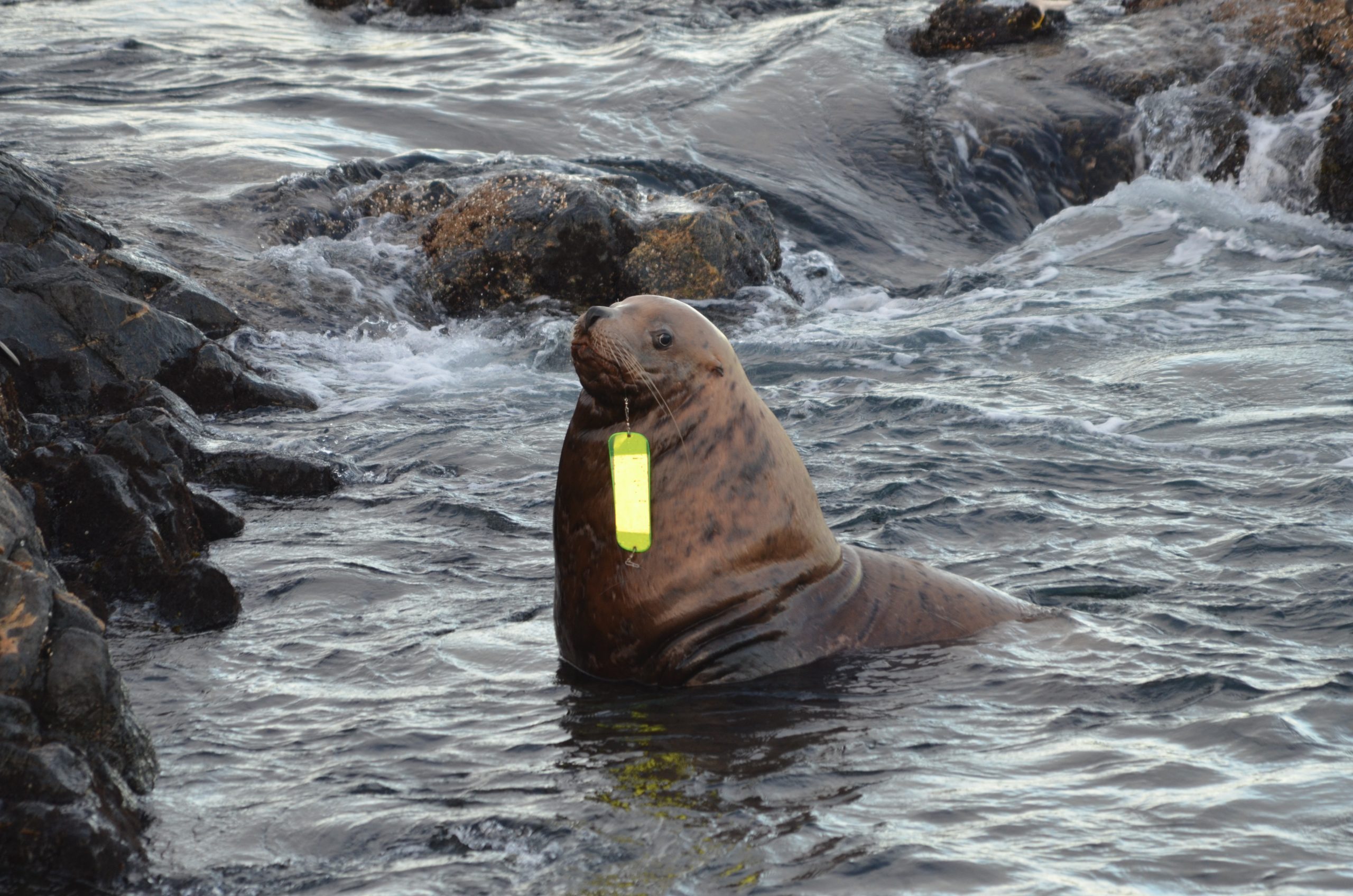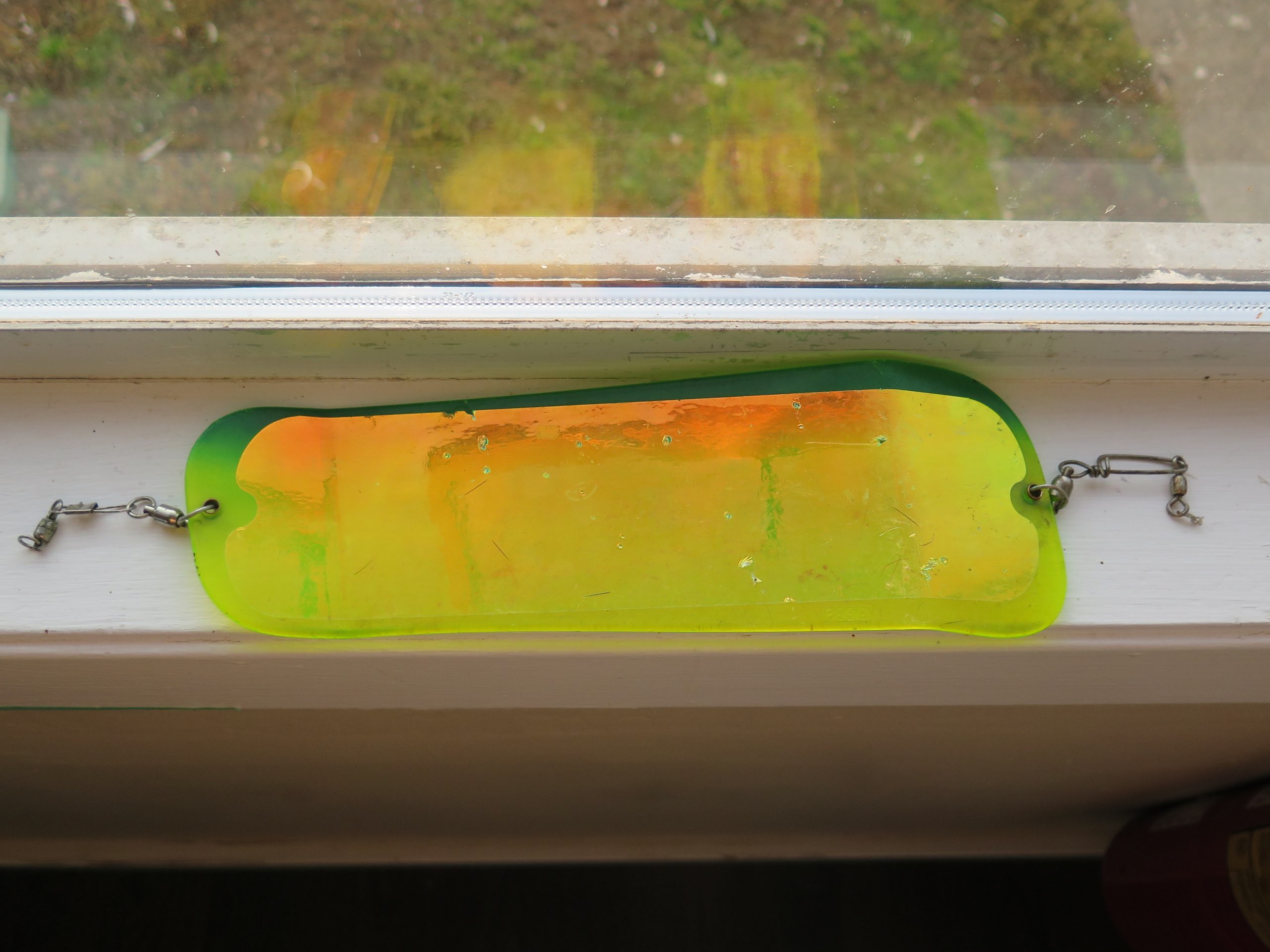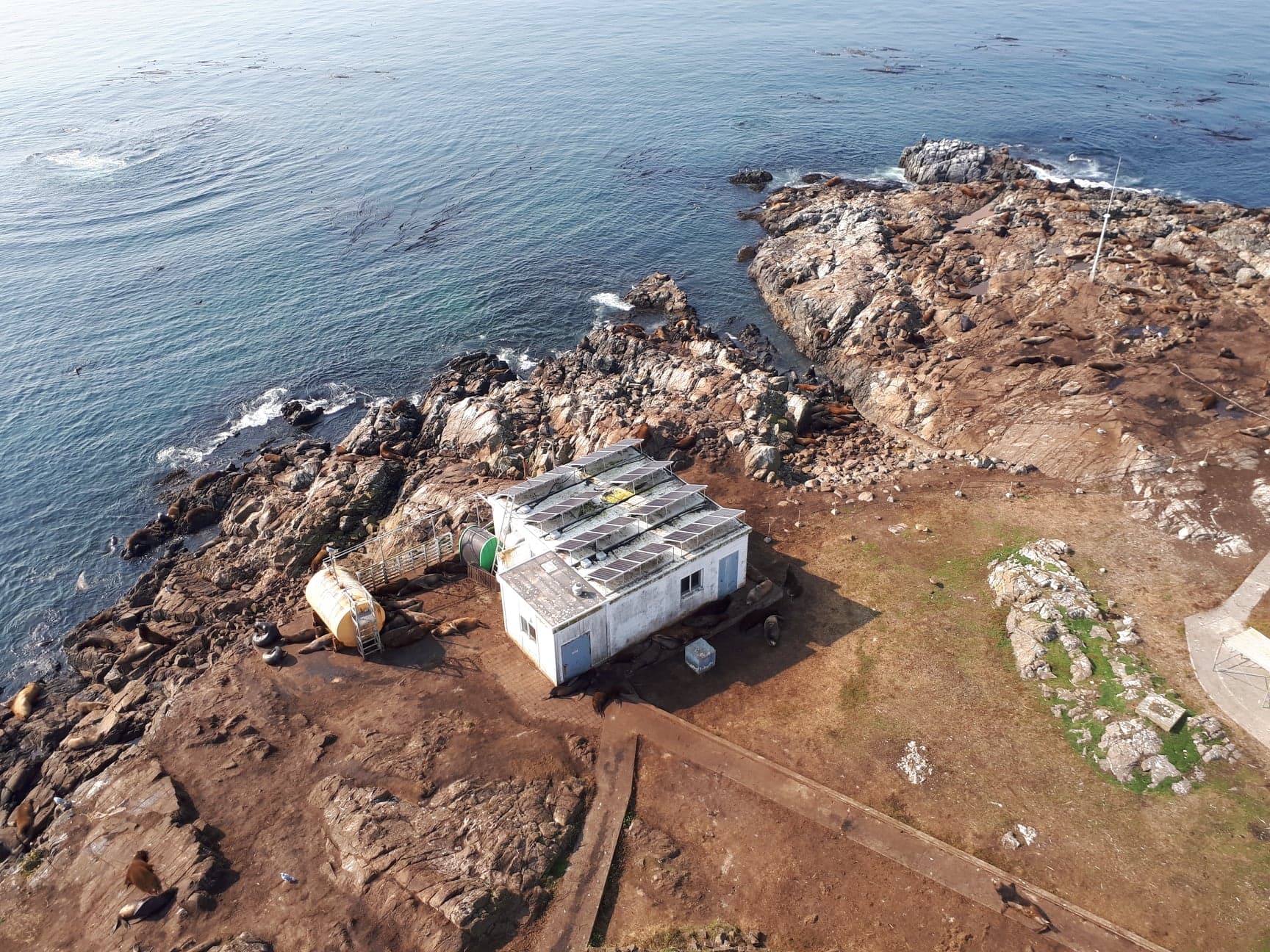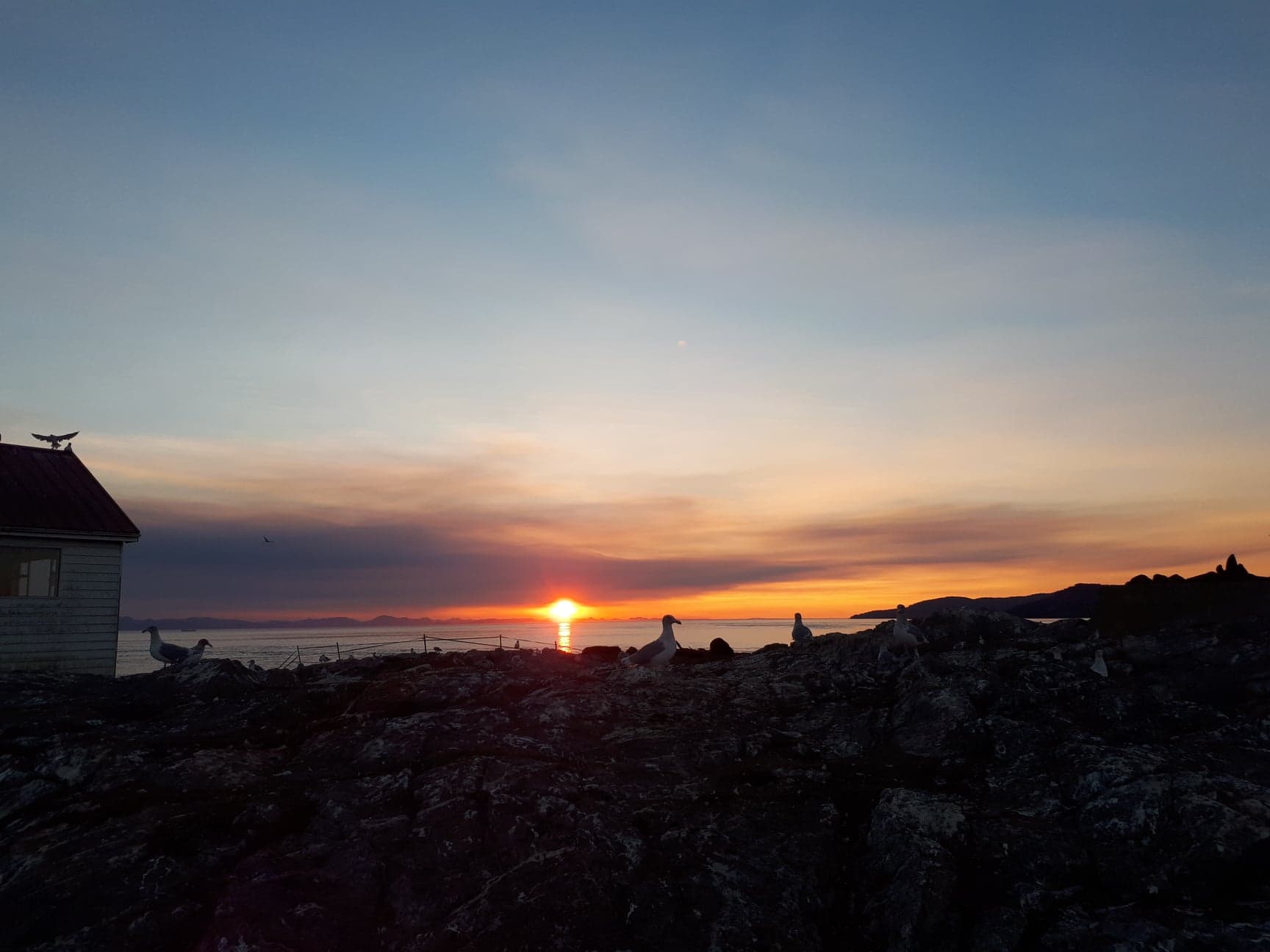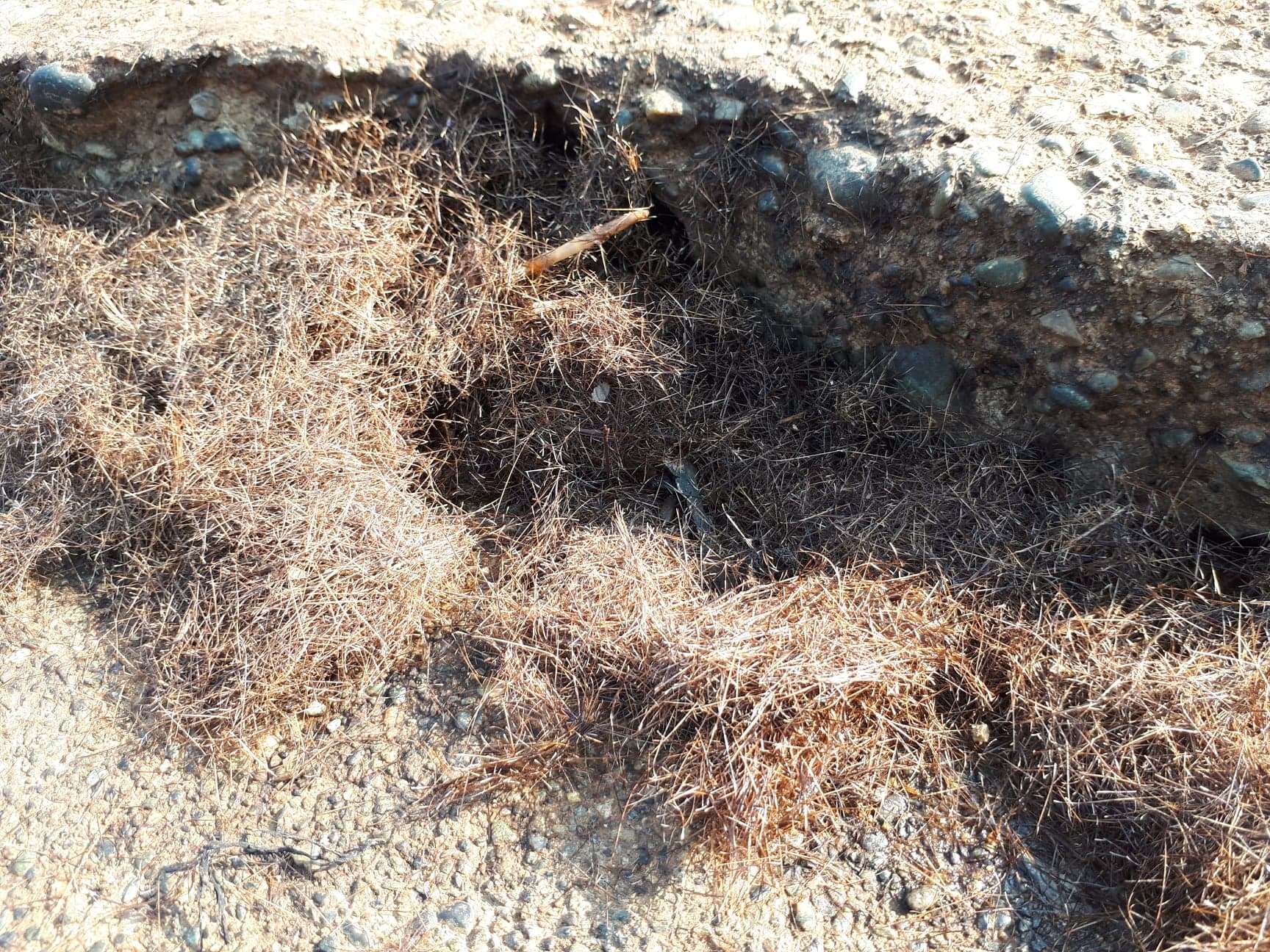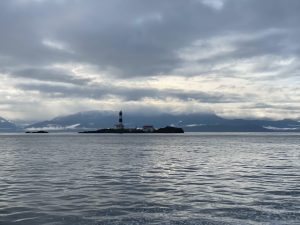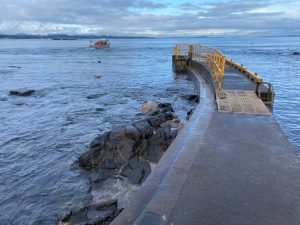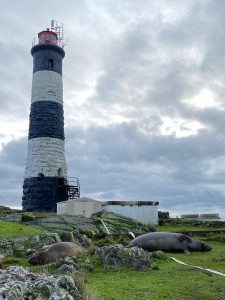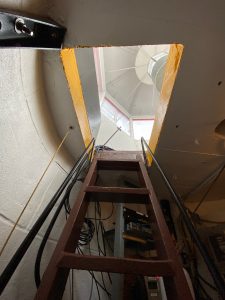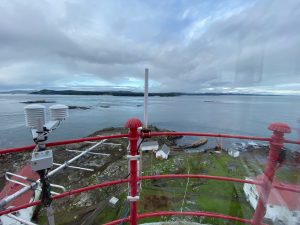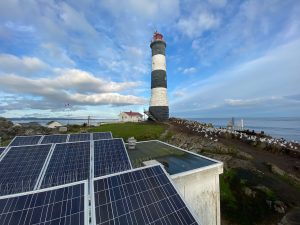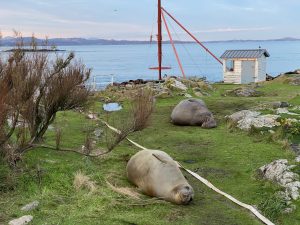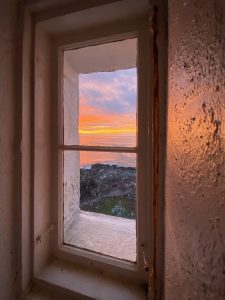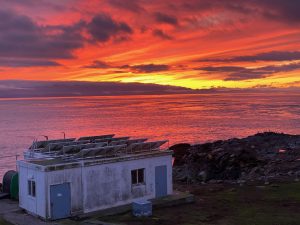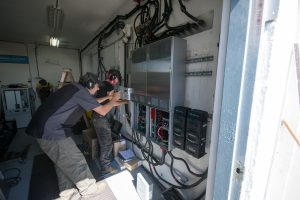Ecological Notes:
- 5 Elephant Seals
- The Beachmaster (Bernard) has left the island, most likely for one more big feed before molting
- 2 Adult females, both starting their molt
- The Beachmaster (Bernard) has left the island, most likely for one more big feed before molting
-
- 2 new (to me) animals here, either very large pups, or small yearlings …. waiting to see if they do a normal molt.
- The only remaining pup that was born here has completed it’s first baby fur molt, and has been tentatively exploring the area by the pier, when encouraged by another new pup I don’t recognize
- 3 known Canada geese nests now, one was right by the door to the house. The gulls robbed all the eggs though, so I dismantled that nest so that they would build somewhere else.
- Protective, even from a distance
- Photo taken later, and cropped
- Gulls and Black Oyster Catchers are pretty much all paired up now, although I have not seen any nests yet as it’s still a bit early in the season
Visitors:
- 4 contractors stayed for 2 days to work on the solar power system
- 3 guests of the Ecoguardian over 2 different time slots
- College instructors and their guests came for a brief visit and overview of the reserve
Facility Work:
- Replacement of damaged solar panels
- added a new array or 4 panels
- redid most of the wiring involved
- New mounts and panels
- The four added panels
There was an immediate improvement to the system, resulting in a reduction of generator fuel use by about 1/3. This will only improve as the days get longer and brighter.
- Visiting guests aided the ecoguardian in some tasks better accomplished by have some else there for safety and/or lifting. (including log and firewood prep and other wastewood and equipment moving and stacking.) they also helped with pressure washing.
- Pressure washing the walks and decks
- Helping with wood
DND events:
- 3 or 4 days of the regular blasting, with safety vessels and Marine Mammal Observers present.
Noted Vessel Traffic:
- Ecotourism vessels are gearing up for the season and visit on a regular basis, often reporting the location of the sea otter and injured or entangled animals to the ecoguardian.
- 2 jet skis in today … a little loud running against the current, but they kept proper speeds
Noted Infractions:
- Only one private fishing vessel in the reserve noted.
Feature Event:
- Spring is in full swing. Flowers are blooming, the pineapple weed is growing and of course the birds are all in courting behavior.
- Pineapple Weed
Weather Events:
- very typical mix of spring weather …..wind from all directions on any given day, mix of sun, clouds and rain squalls.
** All wildlife photos taken at the furthest distance possible, and may be cropped to improve detail! **
Weather – Current:
http://www.victoriaweather.ca/current.php?id=72
Weather – Past:

